
Spring 2024
WWW.DURHAMWT.COM
The member magazine for Durham Wildlife Trust
VISITOR CENTRES
Rainton
3112
The Meadows Coffee Shop
Angela Watson and Team. Tel: 0191 512 8940
Low Barns Nature Reserve
Witton-le-Wear, Bishop Auckland, County Durham, DL14 0AG. Tel: 01388 488 728
Low Barns Coffee Shop
Angela Watson and Team. Tel: 01388 488 729
Charity number: 501038
Paper: FSC accredited, 100% recycled uncoated
Design: Edmundson Design www.edmundsondesign.com
SPRING ISSUE 2024

For reasons I’m not exactly sure of, this winter seems to have been long and dark. A frustrating season where nothing has happened when it should, and there’s always a bit longer to wait. Thankfully, nothing stays the same, and when I went outside yesterday it actually felt warm. Today I can’t see my computer screen because the sun has decided enough is enough, and it’s now time to shine. No doubt the rain will return and temperature drop, but it does feel like a corner has been turned, and by the time the magazine and these words reach you, spring will be fully underway.
Spring clichés are all about new beginnings and we all like a good cliché, so this spring there will be some new beginnings at Durham Wildlife Trust. Feedback from members has often been that they would love to volunteer or attend events, but busy working lives don’t allow. That’s why we are beginning Saturday volunteer tasks and events. Most Saturdays during the year there will be an opportunity to get involved, so, if that’s something you’ve always wanted to do, we’d love to see you.
As always, you can find out about the latest projects and new initiatives, so please enjoy this latest edition and make sure you also enjoy nature’s new beginnings. Thankfully, they always follow every dark winter.
Jim Cokill Director
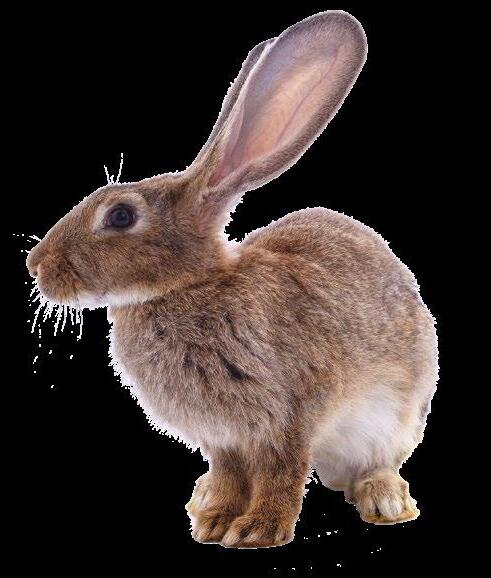
Many thanks to all our corporate members for their ongoing support
Gold Members
Silver Members
Bronze Members
2 Wildlife Durham | Spring 2024
@durhamwildlife @durhamwildlife @durhamwildlifetrust
Northern Gas Networks
Wienerberger Partners Northumbrian Water
Berry Optometrists
Forestry Ltd
Leisure
Simon
Holidaycottages.co.uk Airedale
Verdant
News Trust reserves get official seal of approval 3 Managing Cuthbert’s Moor 4 Events Member events in spring 5 Projects Stronger Shores 6 SeaScapes - view from the shore 8 Nature Recovery 10 Enrichment for all 11 Naturally Native 12 National An historic year for marine conservation 14 6 places to see migrating birds 16 The state of nature in the UK 19 Going against the flow 22 Technology isn’t the enemy 24
CustomerKNECT www.customerknect.co.uk
Kelp by Robert Dennett Thorpe
Printed by:
Cover Image:
Moor,
DH4
Meadows Nature Reserve Chilton
Houghton-le-Spring, Tyne & Wear,
6PU. Tel: 0191 584

Trust reserves get official seal of approval
Natural England, the government’s adviser for the natural environment, is required to monitor and advise on the condition of Sites of Special Scientific Interest (SSSIs) in England. Designated under the Wildlife & Countryside Act 1981, SSSIs represent our best sites for wildlife and geology, supporting habitats and species of national importance. Over one quarter of the Trust’s reserves are designated SSSI.
The Trust’s Bishop Middleham Quarry (one of the UK’s most important quarry sites for wildlife) and Town Kelloe Bank (a rare ancient limestone grassland) were recently surveyed by Natural England to assess their condition. We are proud that both sites passed with flying colours – recognition of the many hours of dedication Trust volunteers and staff have put into these sites.
Here’s what Natural England had to say.
Bishop Middleham Quarry: ‘…a fantastic example of a Magnesian Limestone grassland site which is managed well to enhance the CG8 blue moor-grass and small scabious vegetation community… a population of Durham brown argus … and the rare dark red helleborine. …. Bishop Middleham Quarry SSSI is a fantastic example of a well-maintained Magnesian Limestone grassland site…’
Town Kelloe Bank: ‘…The banksides were rich in CG8 flora diversity and abundance... this unit has been managed very well to enhance and preserve the conservation interests of the lowland calcareous grassland.’
The assessment of SSSIs provides evidence for the delivery of the Government’s 25 Year Plan to Improve the Environment. The extent and condition of Protected Sites is a key indicator of the health of our protected sites network.
Bridge repairs keep Low Barns circular walk open
The Low Barns circular walk was closed for a short period of time during February, while essential maintenance was carried out on the bridge at the entrance to the reserve. The bridge, which has been in-situ for more than 50 years, required some attention due to more than half a century of wear and tear.
Maintenance, like this bridge repair, forms part of an ongoing programme of work the Trust has to complete in order to keep reserves open and accessible to the public. In times of severe weather, the costs can be significant, making the support of our members vital. As extreme weather events increase in frequency due to climate change, our maintenance requirements will increase. You can support our work – keeping nature and wild spaces accessible to all – by making a donation using the link below.
www.durhamwt.com/donate
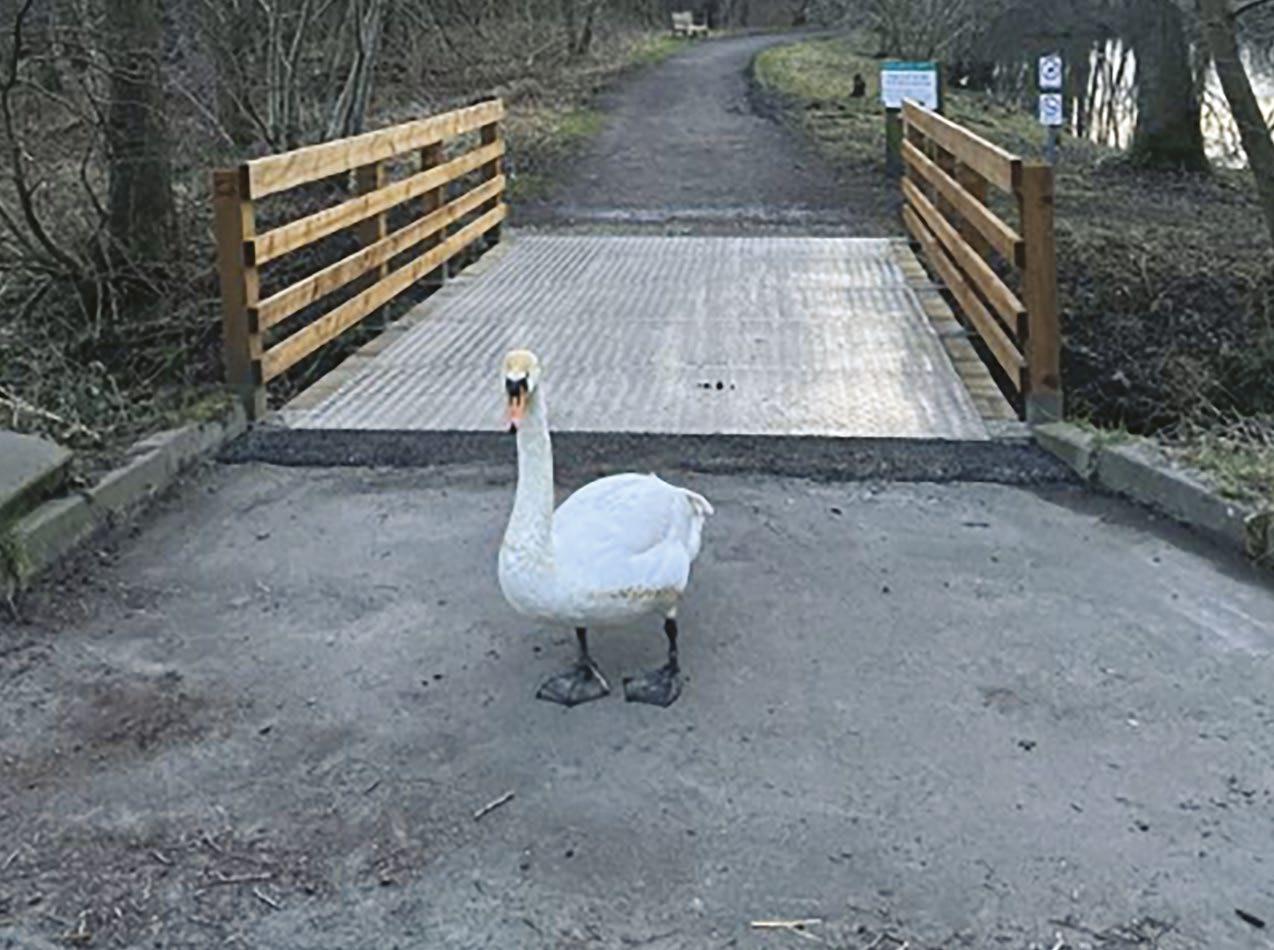
Wildlife Durham | Spring 2024 3 NEWS
Managing Cuthbert’s Moor
 By Rebecca Clark
By Rebecca Clark

The Managing Moors project has been abuzz with activity over the past few months. We are thrilled to report that we have completed our baseline surveys, including a Breeding Bird Survey, Invertebrate Survey, National Vegetation Classification and condition assessment for Cuthbert’s Moor. These findings will serve as invaluable benchmarks for our conservation efforts.
Furthermore, we’ve put in place both a monitoring plan and habitat management plan, essential tools for guiding our ongoing work and ensuring the health of the site.

Planting in partnership to create the
North East Community Forest
Tree planting season is upon us and Durham Wildlife Trust is working with Gateshead Council to run a series of planting sessions through February and March.
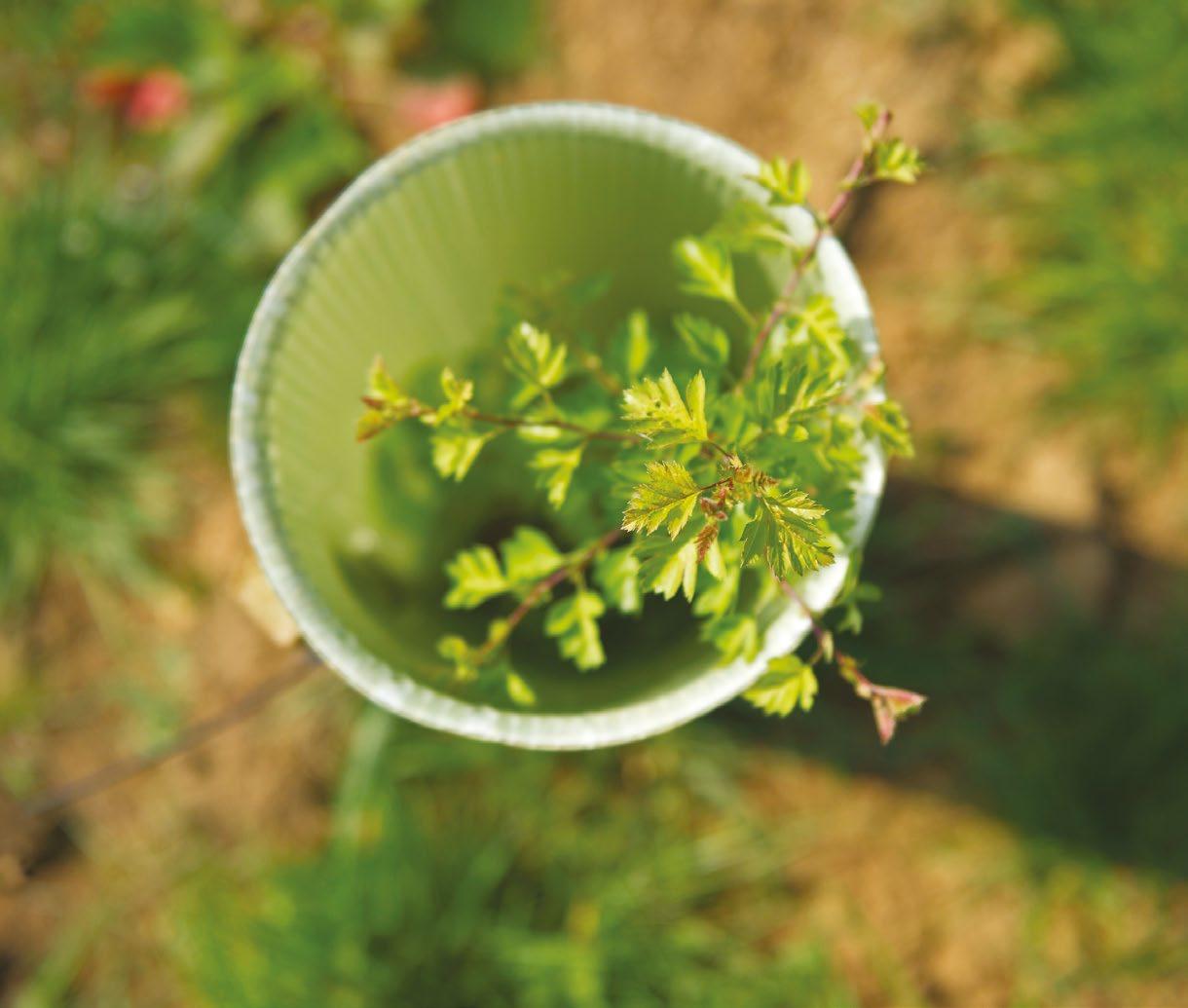
Our dedicated team of volunteers has been instrumental, engaging in citizen science activities such as monitoring peat depths, and participating in practical tasks like dry-stone walling and waste removal.
Looking ahead, we’re eagerly anticipating the restoration of the blanket bog, a crucial habitat within the reserve. Local contractors will spearhead this effort in the coming weeks.
Our commitment to community engagement remains strong, with numerous successful events held at the moor and with local groups and schools. These interactions are vital for fostering understanding and support for our conservation efforts.
A range of sites across the Gateshead region including Chopwell, Swalwell, Holburn Dene, and High Spen will benefit from the planting of more than 10,000 trees. The planting sessions are part of the North East Community Forest Partnership, a collaboration between local authorities, combined authorities, and national, regional and local charities and agencies, which aims to create up to 500 hectares of new woodland and increase canopy cover in the North East to 30% by 2050 – almost double the national average.
Speaking about the sessions, Mark Dinning, Head of Conservation for Durham Wildlife Trust explained:
“The North East Community Forest is hugely important for a wide range of reasons. Afforestation will create new, much needed habitats for wildlife, it protects soil from erosion, improves air quality, stores thousands of tonnes of carbon, and has a proven positive impact on human physical and mental well-being.
“This project is also bringing communities together. By running these planting sessions with residents and communities, we are giving them a shared sense of ownership and guardianship over four precious woodlands.”
For more information about the NECF, go to: www.northeastcommunityforest.org.uk
NEWS 4 Wildlife Durham | Spring 2024
Photo: David Tipling / 2020Vision
EVENTS
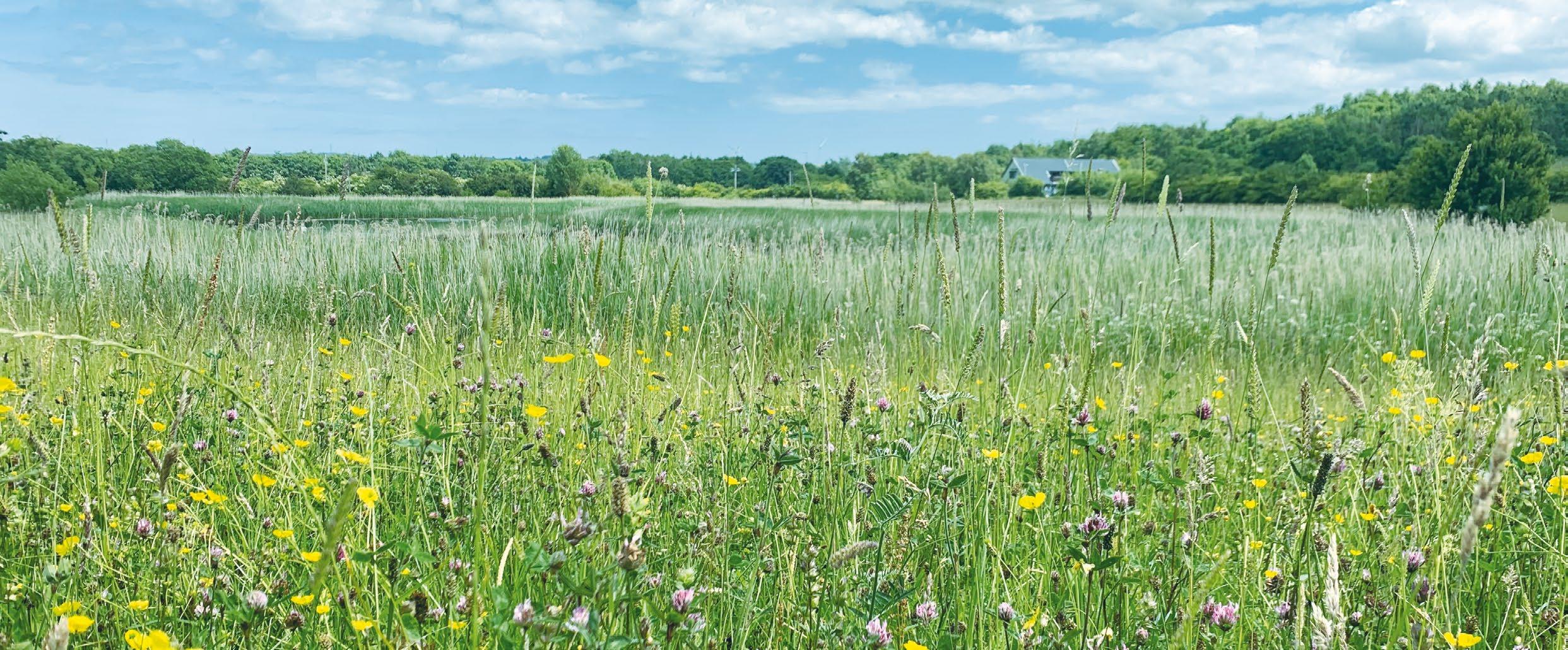
Member Events
Dawn Chorus Bird Walk
Sunday 5th May, 4.30am, Rainton Meadows Nature Reserve
The early bird catches the worm, as they say! Join our resident birdsong enthusiast to celebrate International Dawn Chorus Day and enjoy one of nature’s most iconic spectacles. Our guide will take you through a wide range of habitats and point out some of our most distinctive songsters. Please note this event is weather dependent.
Guided Wildflower Walk
Saturday 15th June, 11am, Shibdon Pond Nature Reserve
Do you know your vetch from your vetchling? Your yellow rattle from your yellow-wort? If not, this may be the event for you! Join Mary-Anne Rielly at Shibdon Pond for a guided wildflower walk through the beautiful hay meadow. We will start with looking at what can be found on an area of improving grassland to the south of the pond, before working our way up to the meadow. This will be a beginner-friendly event and a great opportunity to learn how to identify common wildflowers, whilst exploring one of our nature reserves with equipment to help ID the flowers. Please feel free to bring along any wildflower ID books you may have, as well as a hand lens if you own one.
New Members Morning – Low Barns
Saturday 18th May, 10am
Join Trust staff and volunteers for a guided walk around Low Barns. Find out more about Durham Wildlife Trust, the history of the reserve, and gain an insight into the Trust’s future plans. The walk will begin at 10am and will involve a 45-60 minute circular route. Please wear suitable clothing including sturdy footwear. All members welcome.
New Members Morning – Rainton Meadows
Saturday 6th July, 10am
Join Trust staff and volunteers for a guided walk around Rainton Meadows. Find out more about Durham Wildlife Trust, the history of the reserve, and gain an insight into the Trust’s future plans. The walk will begin at 10am and will involve a 45-60 minute circular route. Please wear suitable clothing including sturdy footwear. All members welcome.
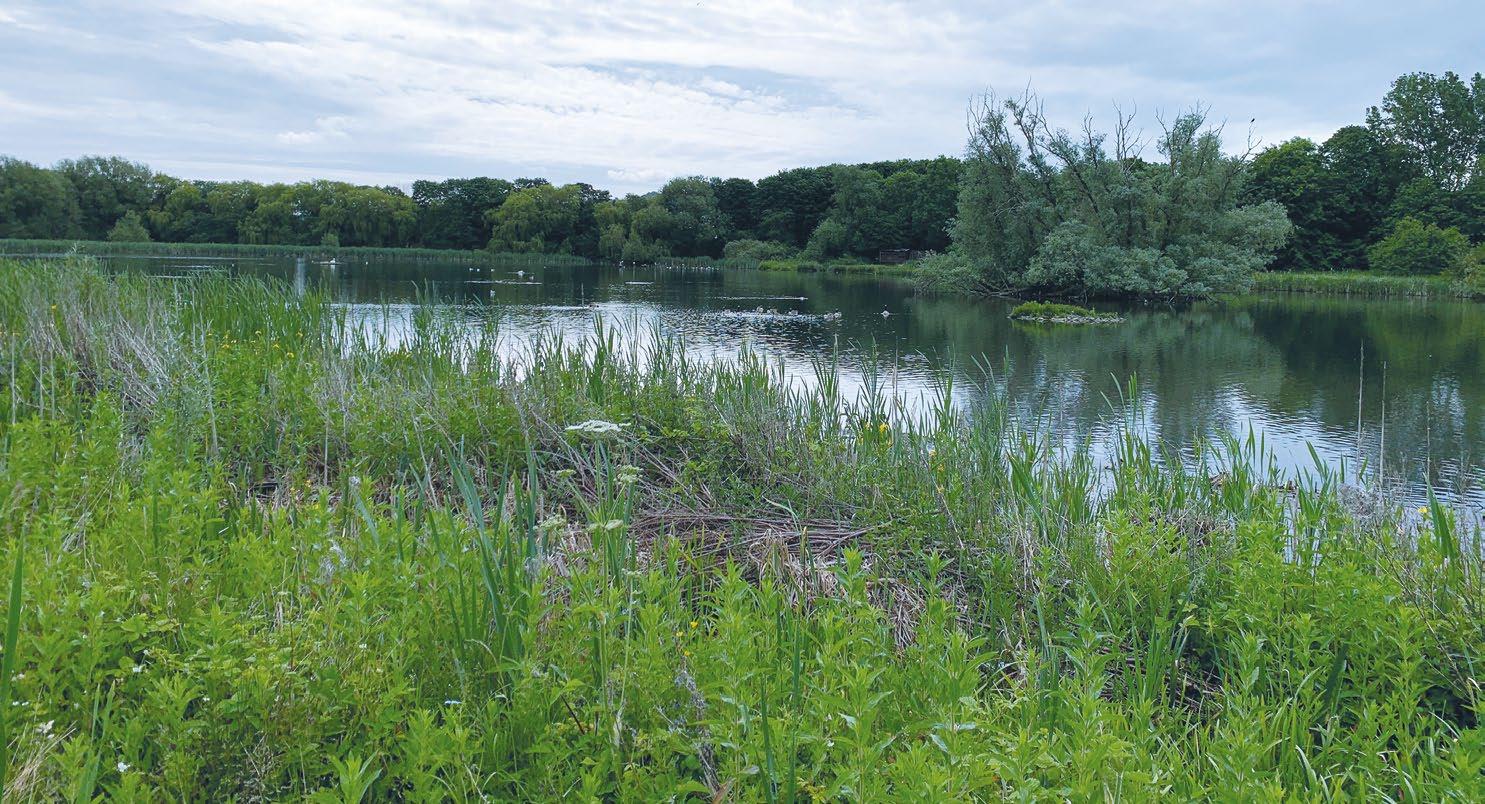
For
Wildlife Durham | Spring 2024 5
book our events online at www.durhamwt.com/events or call 0191 584 3112. The events on this page are for members and members’ guests only, and free to attend unless otherwise stated.
Please
we have selected activities at reserves with visitor centre facilities to include a complimentary cup of tea or coffee.
many of our spring events,
Stronger Shores
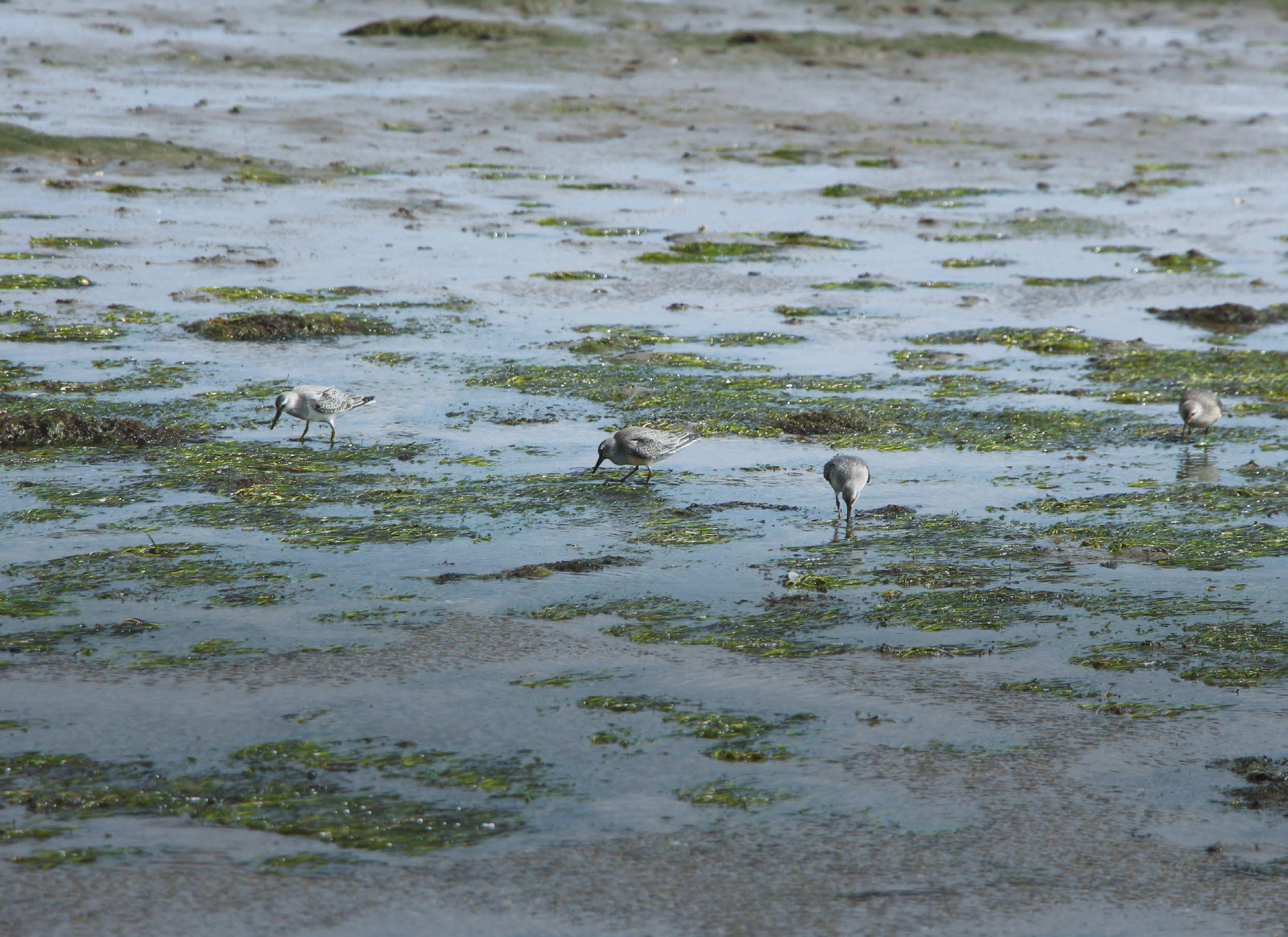
Stronger Shores, Durham Wildlife Trust’s new project that is branching out to the marine world, is now well underway with a new team member, Martina Bristow, joining us as our Seagrass and Seaweed Research Officer. Martina will be working with volunteers and Stronger Shores partners to map the current extent of seagrass meadows at key sites across the Northumberland coastline and investigate the many benefits that this miraculous marine plant can bring to our coastline, environment, and communities.
Much of the seagrass in this region has been lost over the past century, and so a key focus of the research that Stronger Shores will undertake is to identify which factors are critical to successful seagrass recovery. Crucially, and unique to the Stronger Shores project, we hope to get a better picture of how effective seagrass meadows are at reducing wave energy – an important ecosystem service that can help to slow the rate of coastal erosion. This will allow us to better understand how the restoration of seagrass meadows can complement traditional coastal defences, like seawalls and breakwaters, bringing with it additional wider benefits such as enhancing biodiversity and improving ecosystem health.
At one point in history, seagrass was so abundant that it was a staple of local industry, being used as insulation in homes, as pillow and duvet stuffing, and even suggested as an alternative to cotton. However, seagrass populations have drastically declined throughout the 20th century. Poor water quality, harmful fishing practices, and a wasting disease that spread through the seagrass populations in the 1930s, are all believed to have contributed to the estimated 44% decline in seagrass around the UK and Western Europe.
 By Blair Watson Stronger Shores Engagement Officer and Martina Bristow Seagrass and Seaweed Research Officer
By Blair Watson Stronger Shores Engagement Officer and Martina Bristow Seagrass and Seaweed Research Officer
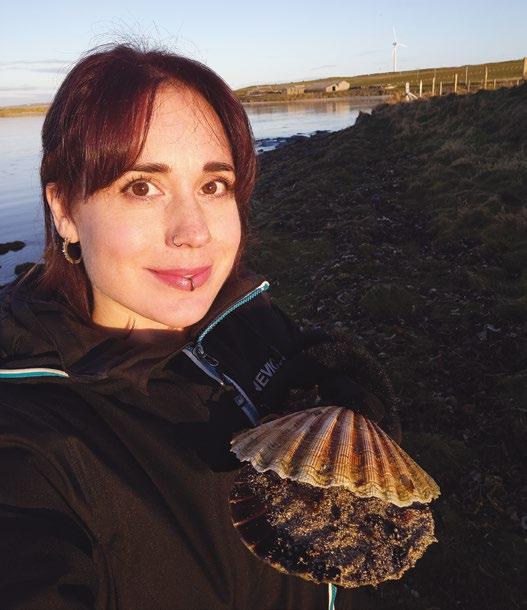
To investigate how seagrass might be successfully restored, Martina will be undertaking small-scale restoration trials across selected sites to look at the impacts these trials have on biodiversity and the surrounding water properties. We have identified eight sites stretching along intertidal areas of Northumberland’s rivers, generally in mudflats, which have either current or historical records of seagrass. If we find seagrass at any of these sites, then the mapping work will begin to understand its extent in that local area.
Once this work is complete, we will choose three of the sites to run small-scale restoration trials. First, we will establish the environmental ‘baseline’ for each site so that we can understand how any subsequent changes we make are impacting the site. Once we have a baseline, we will then introduce small frames that contain seagrass seedlings grown from locally sourced seeds and we’ll then monitor these on a monthly basis for the next year.
By collecting the data from our sites over the next year, Martina will build a picture of the role that seagrass plays in intertidal ecosystems, and how seagrass habitat restoration can be harnessed to increase biodiversity in our local coastal areas, and provide important habitats and food for birds and crustaceans. We will also get a better understanding of just how effective this wonder-plant is at clarifying and oxygenating the surrounding water, providing valuable benefits for many marine species.
6 Wildlife Durham | Spring 2024 PROJECTS
Photo: Richard Lilley
Martina Bristow
Whilst the seagrass restoration community has a good grasp on which factors are important to seagrass, the success of different restoration approaches is very much dependent on the location where restoration takes place. There are many factors that come into play. For instance, tidal movements and human pressures from recreational and industrial activities differ between locations, and so may affect the success of restoration efforts at different sites. Ecological competition for space is also an important element to consider, particularly since gutweed is known to smother seagrass at some sites and prevent it from growing. By using multiple test sites along the Northumberland coast, each with unique environmental conditions, we can investigate which factors are critical to healthy seagrass growth in that area, and, therefore, add to our understanding of how to achieve successful restoration. This learning will be added to a Stronger Shores toolkit, alongside knowledge and experience that we gain from working with partners in other organisations, such as Tees River Trust and Newcastle University, and contribute to a guide of best practice for marine restoration work in the North East of England.
Our hope is that this research over the next couple of years will culminate in a feasibility study which can inform us about which areas might be most suitable for larger scale restoration work after the completion of Stronger Shores, and a clearer image of the benefits that seagrass restoration would bring to our region.
In the meantime, our Engagement Officer, Blair Watson, has been out and about keeping groups within the catchment area up to date on the work of the project so far. Working with South Tyneside Council, we’ve developed some fun and exciting resources to help explain the science behind this project, and, working with Trai Anfield, we’ll be bringing you video highlights of the project as it progresses. We look forward to running some citizen science ‘seaweed surveys’ soon, as well as launching our Stronger Shores school workshops, so head over to www.strongershores.com to find out more!
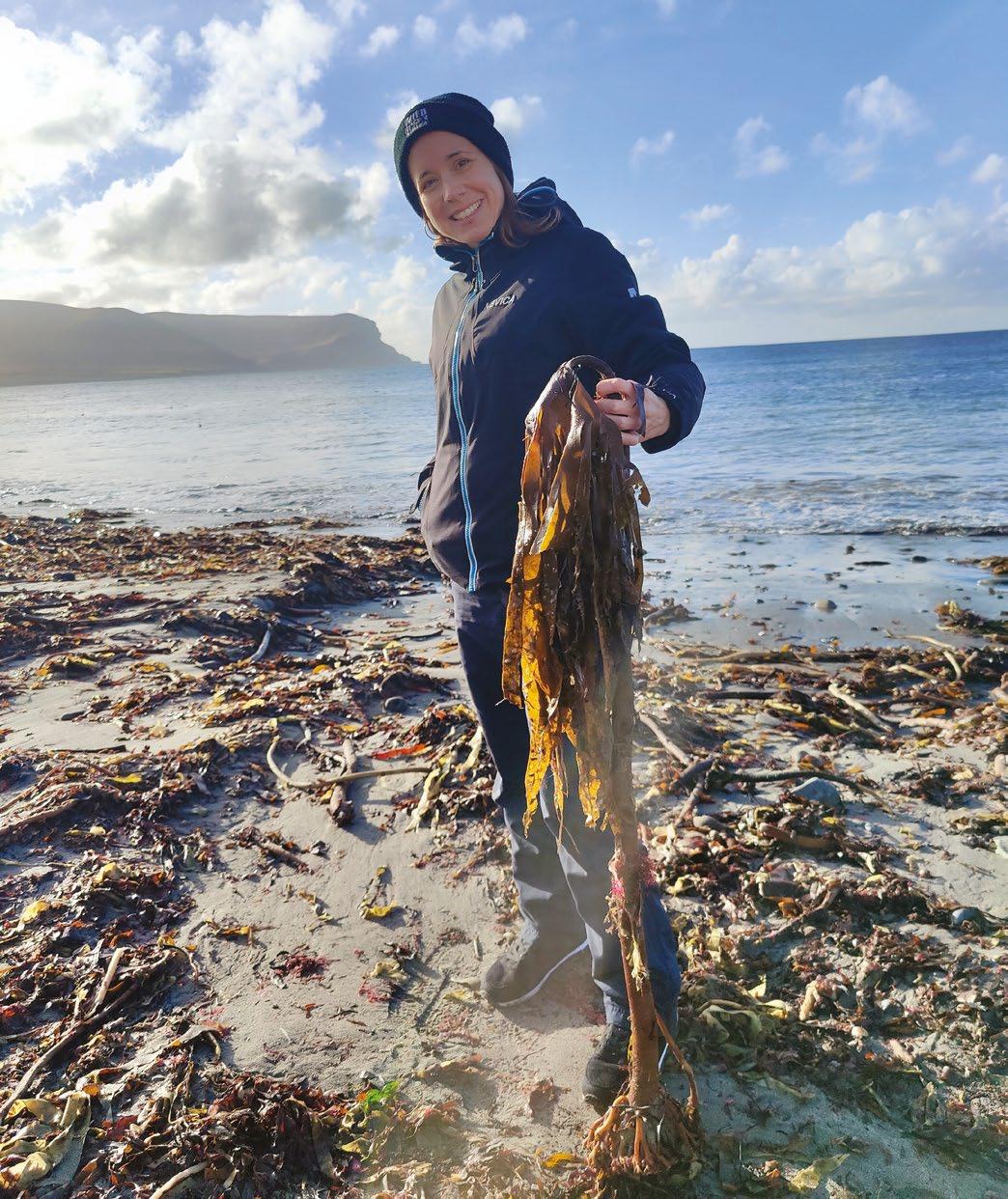
This project is funded by Defra as part of the £200 million Flood and Coastal Innovation Programme which is managed by the Environment Agency. The programme will drive innovation in flood and coastal resilience and adaptation to a changing climate.
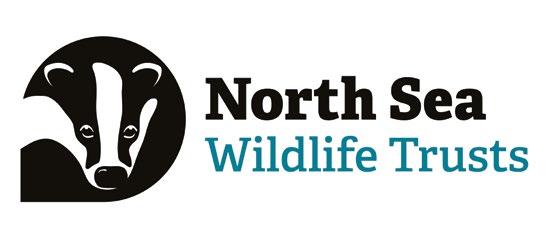

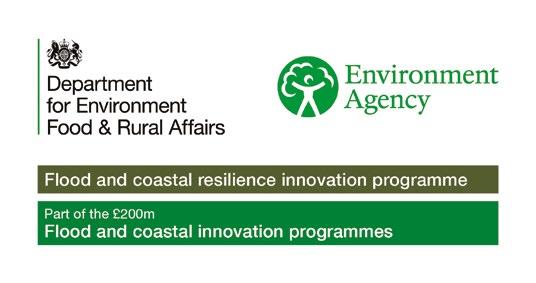

Wildlife Durham | Spring 2024 7
PROJECTS
Photo: Richard Lilley
SeaScapes – view from the shore
 by John Hayton & Amanda Bell
by John Hayton & Amanda Bell
SeaScapes is a project designed to provide opportunities for local people to engage with their coastal landscapes and wildlife.
The project is now into its final year, following a phenomenally successful 2023, with the vast majority of the project’s targets having been met. Notable successes include more than 320 tots and parents attending the Beach Tots sessions; 15 school classes exploring rock pools from Whitburn down to Hartlepool Headland in our North Seas Explorers safaris; and 14 classes diving into our snorkel taster sessions. All of these have met with universally positive responses, with attendees already keen to book onto sessions for 2024.
The project has used a range of citizen science initiatives to deepen scientific understanding of the health of the Tyne to Tees coastline. This has included monthly cetacean surveys and shoreline surveys – where we conduct thorough investigations of rockpools at various sites. A range of coastal groups have been established across the region to enable people to engage with, and care for, our coastlines. These activities have been designed to help engender a sense of guardianship and nurturing our coasts, and include litter-picks, guided bird walks, and strand-line safaris.
Seaing into the future…
2024 sees the project focusing on developing a lasting legacy of experience and opportunity that can continue to serve our precious coastal habitats.
Our schedule of coastal bird walks and talks, facilitated by experts in the field, are in consistently high demand, with sessions planned into the spring and on into the breeding season (see our website for dates and availability: durhamwt.com/events). Likewise, our monthly Beach Rangers continues to offer a range of experiences to younger people, including seal surveys, beach cleans, whale watching, rock-pooling, bird counts, and pelagic trips. We will continue to facilitate school rock-pooling activities at our beaches alongside a range of similar community events.


2024 will see a renewed focus on volunteer engagement. SeaScapes sessions are such a thoroughly enjoyable opportunity that we are keen to share them with as many volunteers and members of the public as possible. There really is no down-side to meeting up at something like a cetacean watch and seawatching for an hour or two with friendly and knowledgeable faces! This year we will be providing on-the-day training for survey events, so all are welcome to come along – you don’t have to have completed a specific volunteer training session prior to coming. This will ‘open up’ things like cetacean watches and shoresearch surveys to all.
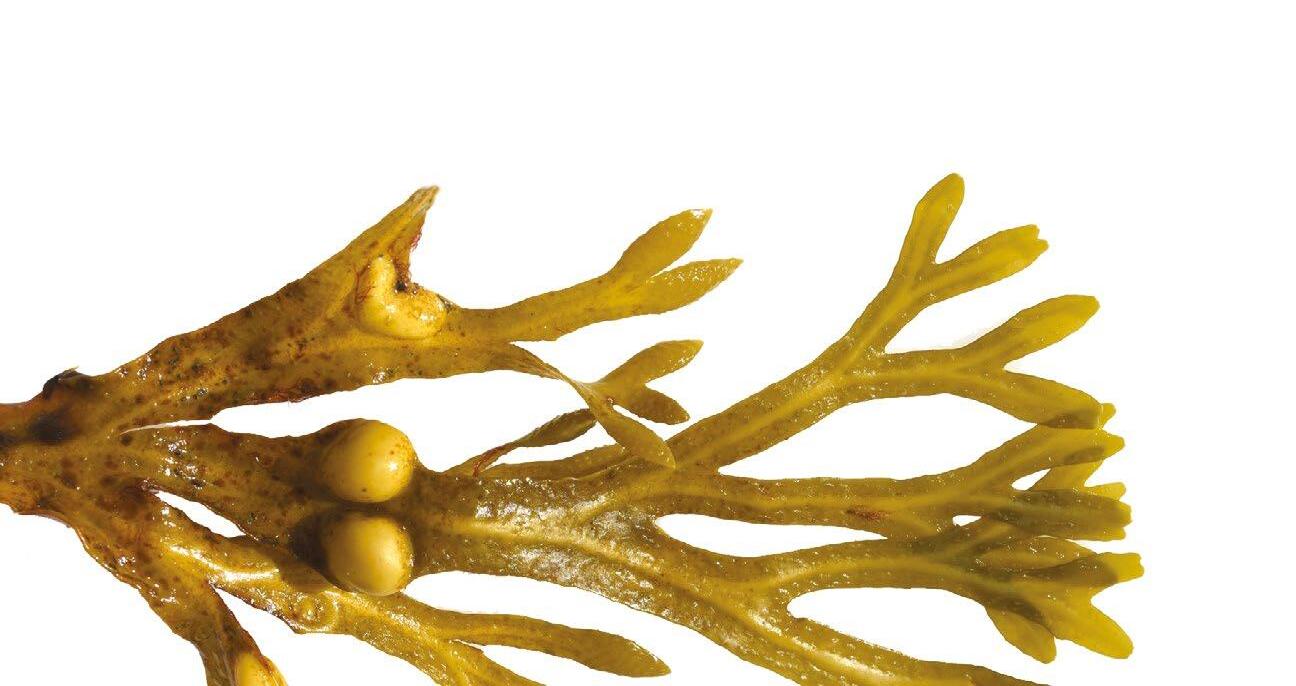
Looking forward to a future beyond SeaScapes, we aim to establish a legacy for the project that can live on beyond the end of the summer. Therefore, we are looking to secure resources for the Coastal Groups that we have established, with the capacity to continue independently. We are also developing SeaScapes legacy web pages with ideas and resources to enable groups to continue to nurture our coastlines and engender a sense of guardianship.
PROJECTS
8 Wildlife Durham | Spring 2024
Returning Terns
By Derek Wood

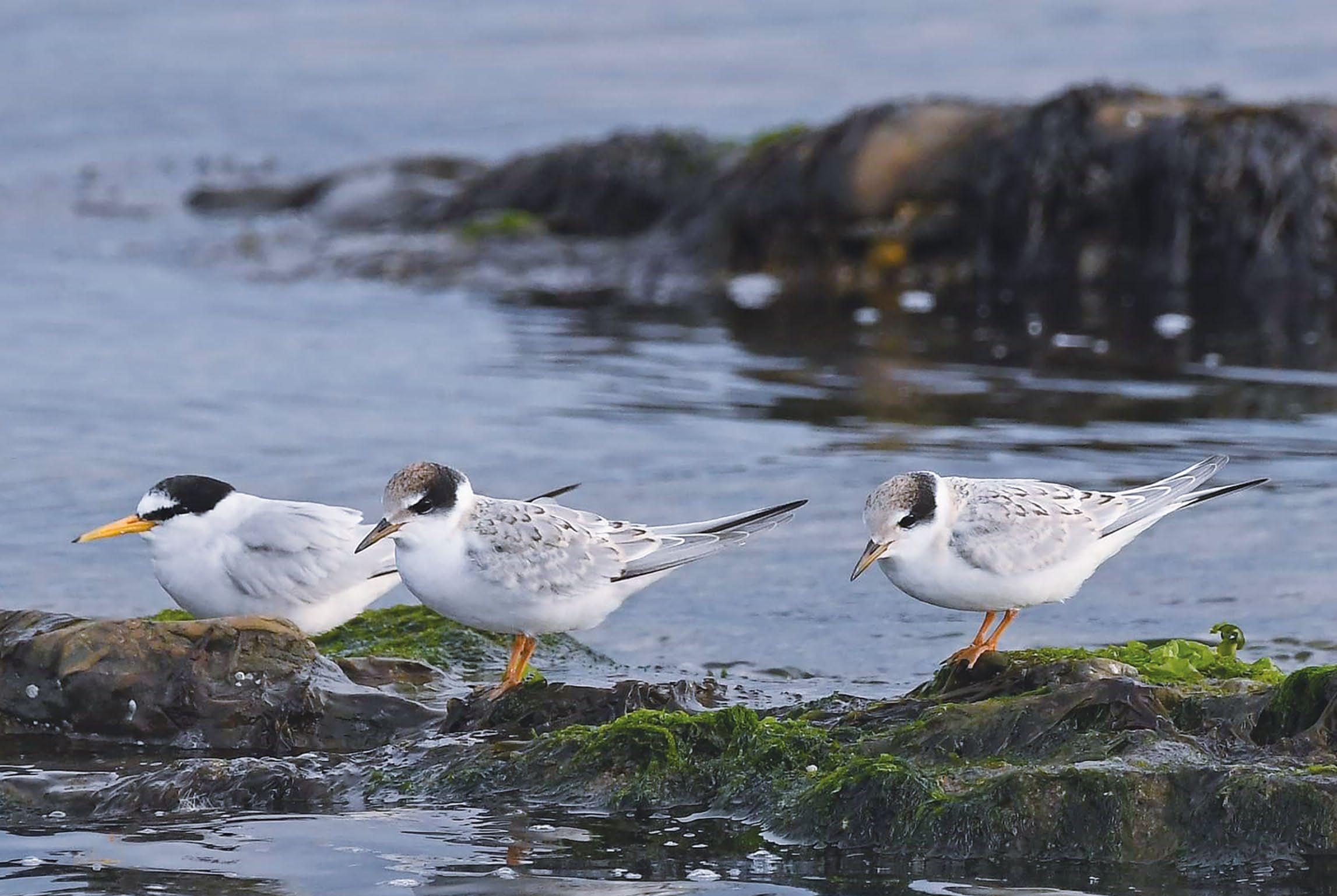
Here we are, just entering into February and already the little terns have begun their long and arduous 3000 mile journey from West Africa, in their quest for suitable nesting sites around the coastline of the UK. Although we can never be certain where the prospecting colonies will choose to raise their young, our hope is that, once again, they will choose the site at Seaton Carew which has proved so successful for them in recent years, when 67 chicks fledged in 2022, and a fantastic 125 in 2023.
So, just like the birds, our planning and preparation for their arrival in early May (fingers crossed) must also begin now. The success of recent years has owed much to the care and commitment of Durham Wildlife Trust wardens and volunteers, who have maintained watch over the site every day (and night!) of the week, from the time of the first arrival through to the departure of the final fledglings in August. So, the first milestone in our project plan will be to recruit and induct wardens and volunteers to work alongside some of our stalwarts who step forward each year. Online you will find a final blog for 2023 in which each of our team wrote a summary of their experiences. Please read it and, hopefully, you too will be motivated to join us in what is a fantastic experience.
Thereafter, the first task the team will deliver is the erection of fencing around the site, which you may have seen on a visit to Seaton Carew. After all, the site attracts visitors from all over the UK and overseas.
Don’t miss your opportunity – we’d love you to join us, or simply pop along for a chat – but be prepared to be converted because these little birds will get under your skin!
Find out more: www.durhamwt.com/little-terns

PROJECTS Wildlife Durham | Spring 2024 9
Photo: Damian Money
Photo: Chris Brown
By Jim Cokill Trust Director
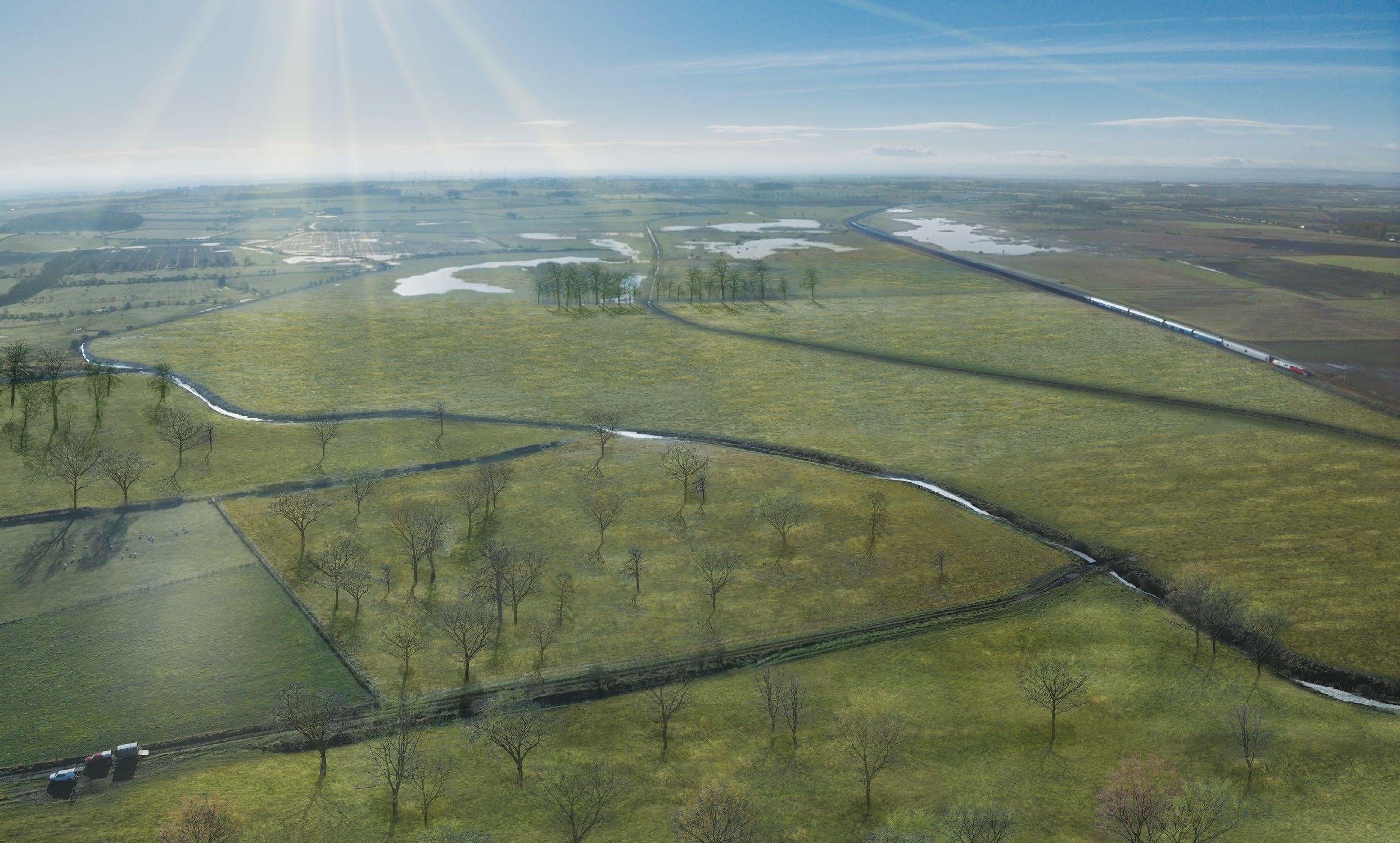

Nature Recovery
The land acquired isn’t the sensitive habitat in need of protection; that’s the estuary of the River Tees and the internationally important bird populations that rely on its mudflats and marshes. Our sites are farmland upstream that were contributing excess nutrient to the river and they provide an opportunity to deliver nature’s recovery at a significant scale.
That recovery process is underway and, thanks to support from Natural England, visualisations have been produced to illustrate how the sites will change over time.
One of the sites is at the heart of the Great North Fen vision, as it’s a part of the Durham Carrs – a large wetland area that was drained in the 19th and 20th centuries.
The aim is to slowly return the lower-lying sections, which includes part of the largest area of lowland peat in County Durham, to fen and other wetland habitats. As the land rises, this will transition into species-rich grasslands and wood pasture on the higher ground.

Over the last 12 months Durham Wildlife Trust has been incredibly fortunate, and managed to acquire new areas of land as part of the Government’s nutrient management scheme, designed to protect sensitive habitats from further harm.
The first phase of the work is to put former arable areas down to a nectar mix under the Sustainable Farming Incentive (SFI) scheme. This is a three-year obligation which will help to lower soil nutrient levels, whilst providing a valuable resource for declining insect populations. The follow-on phase will be the establishment of wood pasturetype habitat, which will be a very long-term process – literally hundreds of years!
On existing grassland areas, the plan is to improve their diversity to create species-rich grasslands as part of the delivery of Biodiversity Net Gain (BNG) schemes. Some proposals are already in place, but they could take several years to come to fruition. Up until that point, the grasslands will be cut for hay, or grazed, to help reduce soil fertility, a prerequisite for creating a more species-rich grassland. The grassland will change in character and species-mix, depending on the hydrology, shifting from a neutral grassland to wet grassland and, potentially, grazing marsh. Where the site is wettest, a mosaic of fen, marsh and ponds is the desired outcome. There may also be the potential to restart peat production by the reintroduction of sphagnum mosses, and some initial discussions have been held with lowland peat experts at Defra. Once again, that could be a long-term ambition, but, hopefully, not as long-term as wood pasture.
For the other sites acquired that are not part of the Durham Carrs, a similar range of habitats will be developed to bring about greater diversity and abundance of wildlife. A mosaic of wood pasture, with areas of meadow and scattered ponds, is the desired endpoint, with SFI and BNG options and schemes beginning to be used to start the restoration process.
10 Wildlife Durham | Spring 2024
Eldon Moor view
PROJECTS
Mordon North plan
Enrichment for all
Durham Wildlife Trust has been selected as a delivery partner for the National Citizen Service Trust (NCS) and The Duke of Edinburgh’s Award Enrichment Partnership Pilot scheme.
The scheme has been developed in recognition of the regional inconsistencies in the quality and uptake of enrichment activities, and aims to resolve this by testing the appointment of local ‘coordinators’ based within community organisations (external to schools and local government). The pilot will see Durham Wildlife Trust provide enrichment coordination for ten Sunderland and South Tyneside secondary schools, and provide bursaries for up to 1000 young people, to support them in accessing enrichment opportunities.
In the North East, the number of children living in poverty is far greater than the national average, presenting a significant barrier to accessing enrichment. Providing financial support is essential, as there is a positive relationship between disadvantaged young people’s access to non-formal learning and their academic achievement. Not only will the scheme improve the experiences of young people this year, if the pilot can demonstrate improved delivery and access to enrichment activities, it should lead to lasting change.
Selection to deliver the pilot recognises the Trust’s ability to create and build strong networks, bringing organisations and schools together to improve outcomes for all involved. For the Trust, it is a fantastic opportunity to understand young people’s needs and to help develop an innovative, enrichment partnership between schools and organisations. The pilot scheme funding has enabled the Trust to appoint an experienced Enrichment Manager, Dorinda Kealoha, who will coordinate activities and provide centralised support to local schools, upskilling people, improving the enrichment offer in the area, and developing a network which enables young people to thrive.

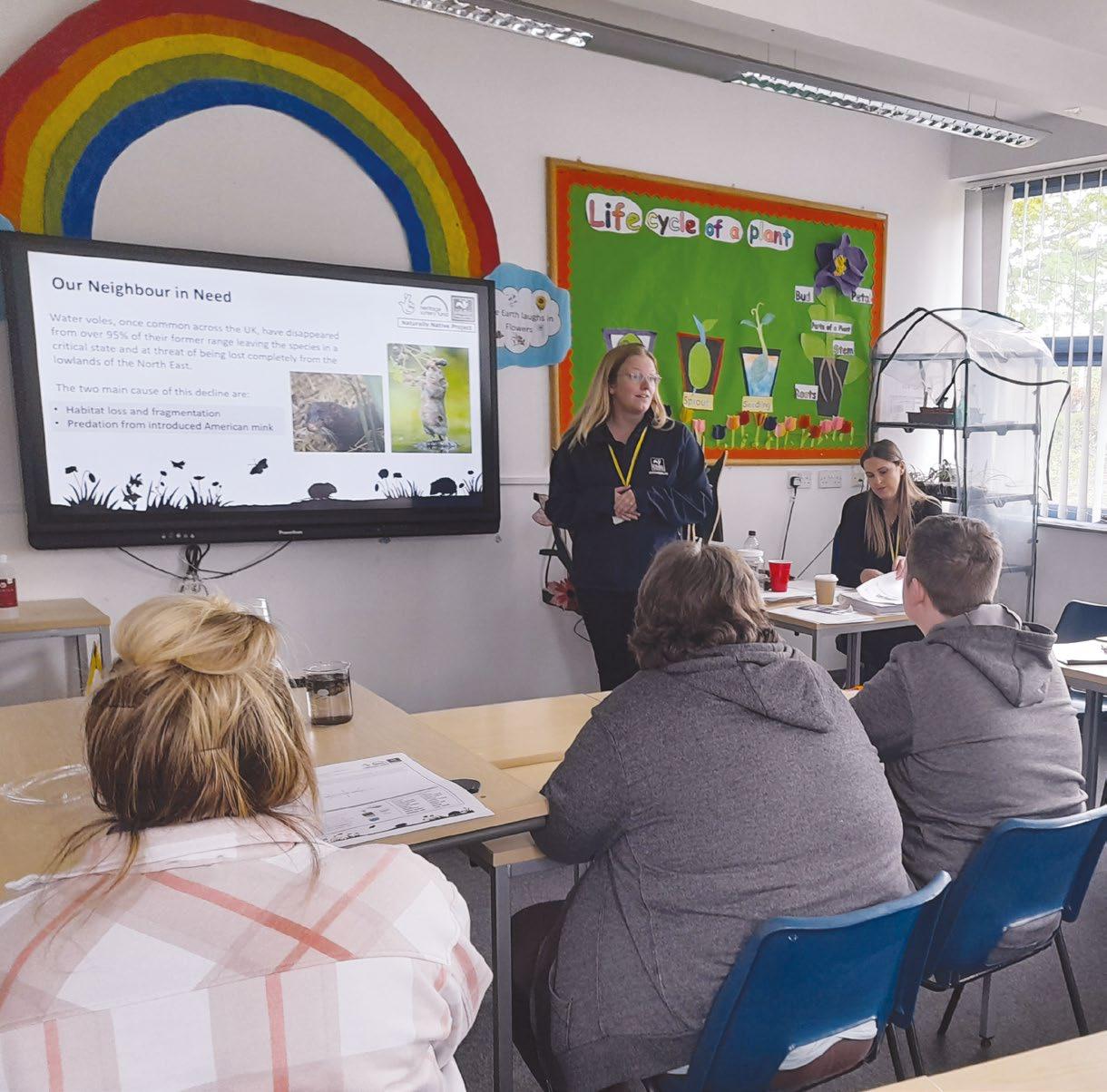
As a community-based organisation, Durham Wildlife Trust will utilise already strong local partnerships to fully test the aims of the pilot. Leaning on our experience in co-designing projects with young people, schools and partners, the pilot will include a series of consultation events with schools and young people, to ensure outcomes align with local needs, whilst echoing a youth voice. In delivering the pilot, the Trust will coordinate spaces for resource sharing, teacher training and feedback to ensure maximum benefit, and develop evidence for future funding.
The Trust’s 2030 strategy sets out a clear mission, where community organising is at the centre of activities. The Trust’s goal is not to ‘do the doing’, but to build connections between groups, grow knowledge, and enable and empower people to take their own actions.
The Enrichment Partnership Pilot completely aligns with this strategic goal.
To find out more about the Enrichment Partnership Pilot and to get in touch, visit:
www.durhamwt.com/enrichment-pilot

Wildlife Durham | Spring 2024 11
Mordon North plan
PROJECTS
Peter Cairns / 2020VISION

Regional recovery of the water vole with Naturally Native
By Mark Dinning

The three-year National Lottery Heritage Fund (NLHF) project, Naturally Native, which focused on conserving our region’s remaining water vole populations, drew to a close in December 2023. Delivered by Durham Wildlife Trust, in partnership with Northumberland Wildlife Trust and Tees Valley Wildlife Trust, it has delivered habitat improvement to facilitate growth and expansion of existing water vole populations; systematic and priority-led control of American mink, and a programme of education and engagement with landowners, local communities and other stakeholders.
In June 2020, NLHF awarded Durham Wildlife Trust £507,400 – or 79% of the total anticipated project delivery costs of £643,270 – with match funding of almost £136,000 raised from corporate donations, and in-kind contributions of volunteer time. This was a much-needed boost to the North East of England’s water vole populations.
Sadly, water voles have disappeared from large swathes of the North East, and, in the UK, are at threat of extinction. Although extensive surveys were undertaken by project staff and volunteers, from 2020 to 2023 there were no confirmed records in Tyne and Wear, once a stronghold for this iconic mammal of UK rivers and streams.
Results showed the main populations are now centred in the North Pennines and Middlesbrough. All evidence suggests that the continued loss of water voles is primarily due to predation by established populations of the American mink.

American mink first arrived in Britain in the 1920s, imported by commercial fur farms. They were first reported to be breeding wild in the UK in 1956, because of escapes and deliberate releases. Since then, their population has swelled and is now estimated at around 108,000 individuals, which has proved devastating for water voles and other native wildlife. Mink are territorial, active predators, feeding on anything that is slow enough or small enough to catch, including ground-nesting birds and water voles.
The project recruited a Project Manager employed by Durham Wildlife Trust, and three Project Officers, one for each Trust. Their role was to undertake surveys, community and school engagement, volunteer leadership, and manage mink control in local rivers. They have been supported in this by 93 volunteers. Some of their many achievements are listed on page 13.

12 Wildlife Durham | Spring 2024
Head of Conservation
PROJECTS
Photo: Terry Whittaker / 2020Vision
American mink control is undertaken by deploying floating rafts along water courses that house a humane trap. Over the duration of Naturally Native, the number of traps and rafts deployed increased from five, in May 2021, to more than 80 by November 2023. The effectiveness of the project can be demonstrated as the number of active traps and rafts increased and the number of mink caught decreased. The strategic approach adopted to the trapping effort meant that where a trap was active and mink were known to inhabit, further rafts were located upstream or downstream to help reduce population numbers.
This spring will be a good measure as to the impact of this crucial work to date. As more mink are removed from river catchments, we would expect to see fewer mink being caught overall, and the remaining captures being females as they search a wider area for a male. The trend to date displays positive outcomes.
344 site surveys undertaken for water voles across Durham, Northumberland and the Tees Valley.
298 mink caught and removed from the ecosystem to improve biodiversity and wildlife habitat for threatened species such as the water vole.
11km of conservation improvements at strategic locations to improve biodiversity and habitat for water voles.
57 landowner agreements signed to support mink control and survey work, with 27 landowners attending water vole habitat workshops.
808 people engaged across the project in 28 different public events to increase awareness of their local river environment and threats to vulnerable species.
891 children from 16 schools engaged in 36 different education sessions.
93 volunteers recruited and participating, contributing 731 days of volunteer time.
23 training courses delivered with a total of 400 people attending.

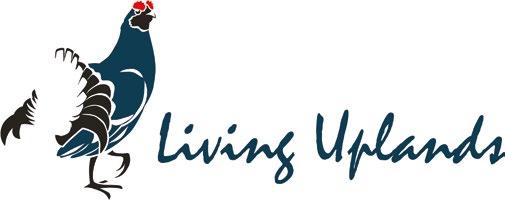
If water vole populations are to recover, the other important piece in the puzzle will be to ensure they have suitable habitat to breed in. The main water vole breeding season is from April to September. In ideal habitat, the birth rate is high and females will give birth to five litters a year, with five to eight babies each time! Extensive work was undertaken by Naturally Native to restore suitable water vole habitat. In the North Pennines, this has included digging ponds suitable to support water vole breeding, with lots of opportunities for burrow making and suitable vegetation to feed on. In other places, habitat restoration has focused on improving the banksides of existing water courses, with invasive plant control on Old Durham Beck and scrub management along the river Don. Across the region this amounted to more than 11km of bankside improvements.
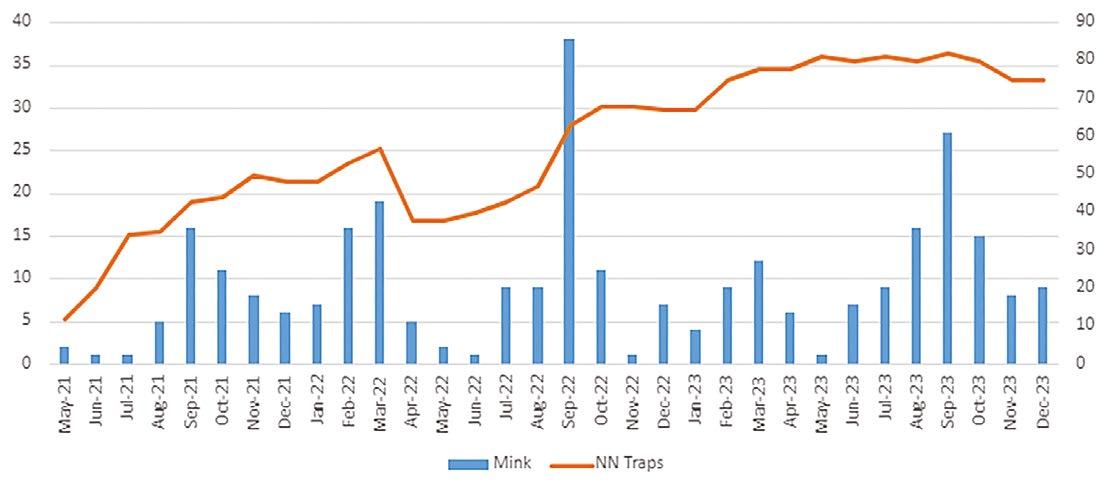
Naturally Native provided the Trust with a new opportunity to engage with school children around the natural world, habitats and the ecological emergency. The project developed bespoke learning material aimed at Key Stage 3 pupils that complemented the needs of the school and learning outcomes of the National Curriculum, with 891 children engaged. Topics included looking at the contribution habitats make to water quality, the anatomy of water voles and mammals, and issues linked to invasive species and habitat loss.
Naturally Native would not have been a success without the support of a wide range of landowners, and in particular, the Living Uplands project, which helped to coordinate activity across upland areas. In all, 57 landowners signed agreements to support mink control and survey work, with 27 landowners attending water vole habitat workshops. Many of them recounted the demise of wildlife in their area and their wish to see it return. To have kingfishers and water voles on local becks and streams once againsomething that has been a rare sight since the American mink became established.
As we reflect on the positive impacts of Naturally Native, we need to also consider what is next for water vole recovery in the Durham Wildlife Trust patch and further afield. The Trust has recently secured funding from Defra to continue the control of mink, whilst conversations with partners about a north of England-wide approach to water vole recovery are underway.
Wildlife Durham | Spring 2024 13
Naturally Native active traps and numbers of mink caught
PROJECTS
After almost completely disappearing from UK seas, bluefin tuna made a comeback in 2023

An historic year for marine conservation
he creation of the first Highly Protected Marine Areas in English water made 2023 an historic year for marine conservation. This huge milestone was achieved thanks to years of campaigning by The Wildlife Trusts’ sea-loving supporters. The new gold-standard of protection will stop all damaging activities such as trawling and will help marine life to recover, benefitting fishers and boosting carbon storing habitats at sea. These special places cover less than half a percent of English seas though, so it’s just the first tiny step towards better protected seas.
Marine areas weren’t the only reason to celebrate last year, with The Wildlife Trusts’ Marine Review 2023 also showing an exciting rise in sightings of apex predators – those at the very top of the food chain – in our seas. One species that created an incredible spectacle off the UK coast this year was bluefin tuna. Dan Abbott, cinematographer, witnessed a bluefin tuna feeding event in UK waters. He said: “The first indicator that something exciting was about to happen was seeing lots of seabirds – mainly gannets and shearwaters –gathering. As they have an aerial view, seabirds can often be a great indicator of where fish and marine mammals may be below the surface. As the tuna
feed, the surface appears like boiling water as these powerful and agile fish speed through the sea.” Atlantic bluefish tuna were once common in UK waters, but overfishing caused numbers to plummet during the 20th century, with the fish all but vanishing from our waters by the 1990s.
Humpback and fin whales, which were once more common around our coasts, also showed promising signs of recovery in 2023. Humpback whales were seen off Burhou, a small island northwest of Alderney (part of the Channel Islands) and off Cornwall. There were also increased sightings of Northern fin whales, the second largest mammal in the world. Meanwhile it was a bumper year for Risso’s dolphins, with 156 sightings in 2023, compared to 45 in 2022! Reports of ‘super-pod’ feeding frenzies were reported, with common dolphins and fin whales joining in.
It wasn’t all good news however, as in contrast to these wins, the global pandemic of avian flu has sadly continued to devastate UK seabirds. While there are signs that some birds are showing immunity, vast numbers have been lost.
Discover more about our 2023 marine review here wildlifetrusts.org/news/marine-review
14 Wildlife Durham | Spring 2024 NATIONAL UK NEWS
BLUEFIN
TUNA © RAY HARRINGTON, UNSPLASH.COM
Vanishing rules leave farm wildlife at risk
Basic rules that help protect hedgerows and rivers on or surrounding farmland expired on 31st December 2023, with nothing to replace them – putting wildlife in our countryside at greater risk of harm.
These rules, known as ‘cross compliance’ had to be followed by farmers if they wanted to receive rural farm payments from UK Government between 2005 and 2023. To qualify, farmers were not permitted to farm up to the edge of rivers, so as to help prevent soil and farm pollution from being washed into the water. There were also rules about when hedgerows could be cut so that breeding farmland birds were protected at the most important times of year.
Following the UK’s exit from the European Union, the UK Government announced that this rule would cease to exist at the end of 2023, but that it would be replaced by new UK rules.

However, no new rules are in place, and the Government’s Department for Environment, Food and Rural Affairs (Defra) has not confirmed whether these protections for nature will be maintained. Meanwhile, nature on farms is in limbo, with nesting birds in danger and our already struggling rivers and streams at risk of increased pollution.
The Wildlife Trusts have joined forces with National Trust and RSPB to urge the UK Government to uphold protections for nature while providing much better support for farmers. We would like to see farmers paid to take a ‘whole farm’ approach to naturefriendly farming through better designed payment schemes and access to quality independent advice on the best actions that can be taken on their farms.
Find out more at wtru.st/hedgerows

General election countdown: nature matters!
With a general election expected in 2024, The Wildlife Trusts have been investigating how much nature matters to our supporters and the general public, and whether the nature policies set out by political parties will influence how they vote.
We carried out two nationwide surveys, which revealed that environmental charities are supported by a large and politically diverse range of people – with voters feeling similarly connected to nature, regardless of where they identify on the left to right wing spectrum.
Results from Wildlife Trust supporters indicated that 61% would vote based on environmental policies and a further 32% are considering doing the same. Of all those surveyed (including nonsupporters), only 7% didn’t believe that nature loss or climate change were a serious threat to humanity.
The upcoming general election will be vital for our natural world, and these results suggest that voters are calling on all political parties to make bold plans to restore nature, tackle water pollution and halt climate change.
UK HIGHLIGHTS
Discover how
The Wildlife Trusts are helping wildlife across the UK
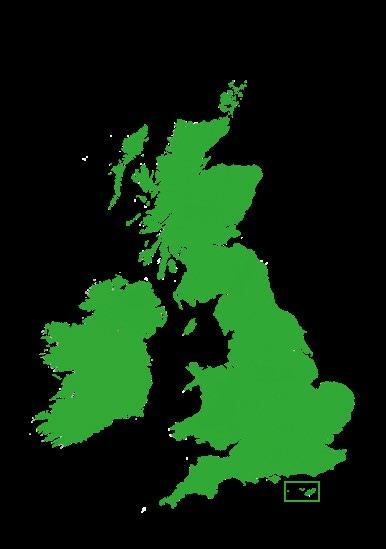
Squirrelling away
The Great Scottish Squirrel Survey had more participants than previous years, with just under 2,000 red and grey squirrel sightings across the country. Every record helps Scottish Wildlife Trust to understand population distributions and take targeted action to protect red squirrels. Sightings of both species can be reported all year-round. wtru.st/squirrel-sightings
Very vole done
Nottinghamshire Wildlife Trust is set to bring UK’s fastest declining mammal, water voles, back from the brink. Half a million pounds from Natural England’s Species Recovery Programme will create vital wetland habitat and restore 50km of rivers to increase water vole numbers. wtru.st/notts-water-vole
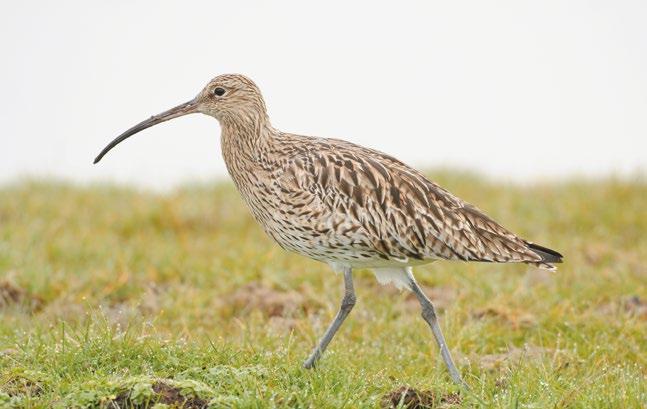
High security
One of our most bizarre and beautiful rare birds, the curlew, is to get £230k worth of home improvements at Berkshire, Buckinghamshire & Oxfordshire Wildlife Trust (BBOWT) Gallows Bridge Farm nature reserve. New pools, security cameras and anti-predator fencing will help to create new bespoke habitat for this endangered species. wtru.st/curlew-habitat
Wildlife Durham | Spring 2024 15 UK UPDATE
CURLEW © TERRY WHITTAKER/2020VISION. POLLING STATION © DANIEL HEIGHTON, SHUTTERSTOCK. WHITETHROAT © ANDREW PARKINSON/2020VISION

migrating birds 6 places to see
CUCKOO © LUKE MASSEY/2020VISION 16 Wildlife Durham | Spring 2024 NATIONAL
pring is a time of great change in the wild world. As the days grow brighter and warmer, millions of birds are on the move. They leave their winter refuges and race back to their breeding grounds, driven by the urge to find a mate and raise some chicks.
Cuckoos, ospreys, warblers and many more birds are returning to the UK from the warmer regions of southern Europe or Africa. They don’t all arrive at once; each species has its own schedule. Sand martins and wheatears begin arriving in March, but quails and nightjars are stragglers, appearing as late as May.
On some spring days, you can see migration in action, with flocks of birds flying overhead on their way to their summer home. Birdwatchers call this visible migration, or vismig for short. But flying is hard work, so keep an eye out for migrants stopping off to spend a few hours refueling before continuing their journey.
Here are six of our best nature reserves for experiencing spring migration.
See the spectacle for yourself
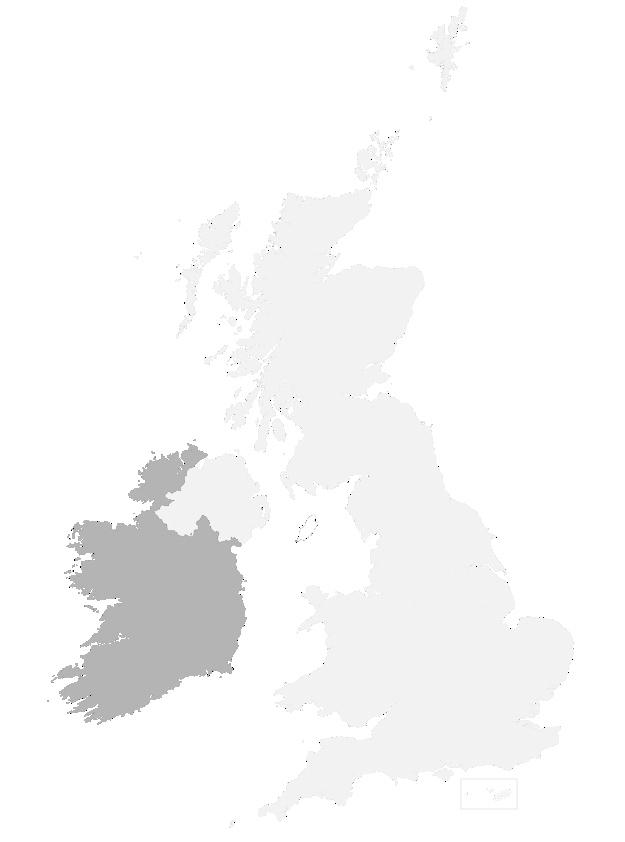
1 Cemlyn Nature Reserve, North Wales Wildlife Trust
An incredible site to visit on the wild coast of Anglesey, with its unique, shingle ridge. Cemlyn welcomes a wide range of wading birds and between May and July is host to nesting colonies of Sandwich, common and Arctic terns.
Where: Anglesey, LL67 0EA
2 Red Rocks Nature Reserve, Cheshire Wildlife Trust
On the edge of the Dee Estuary, this nature reserve is an excellent coastal spot for birdwatching with sand dunes, reed beds and marsh attracting regular spring migrants like reed buntings, sand martins and wheatears.
Where: Hoylake, CH47 1HN
3 Spurn National Nature Reserve, Yorkshire Wildlife Trust
One of the best sites in the UK for visible migration, with thousands of birds passing overhead. The adjacent Humber Estuary is of international importance for its vast numbers of wildfowl and wading birds passing through. Where: Hull, HU12 0UH
4 Christopher Cadbury Wetland Reserve, Worcestershire Wildlife Trust
Worcestershire’s premier bird-watching nature reserve, Upton Warren attracts birds throughout the year. It is home to the UK’s first inland breeding avocets and attracts lots of wading birds while on passage as a vital stop over. Where: Wychbold, B61 7ER
5 Walthamstow Wetlands, London Wildlife Trust
An internationally important site for migrating birds, Walthamstow Wetlands is excellent for an urban vismig. Just 15 minutes from central London, you will find a unique city oasis to connect with the magical world of migrating birds.
Where: Walthamstow, N17 9NH
6 Rye Harbour Nature Reserve, Sussex Wildlife Trust
In spring, gull numbers increase, and oystercatcher and dunlin feed along the shore and roost on the shingle at high tide. Gannets and flocks of Brent geese also return on their eastward passage to breeding grounds. Where: Rye, TN31 7FW

Wildlife Durham | Spring 2024 17
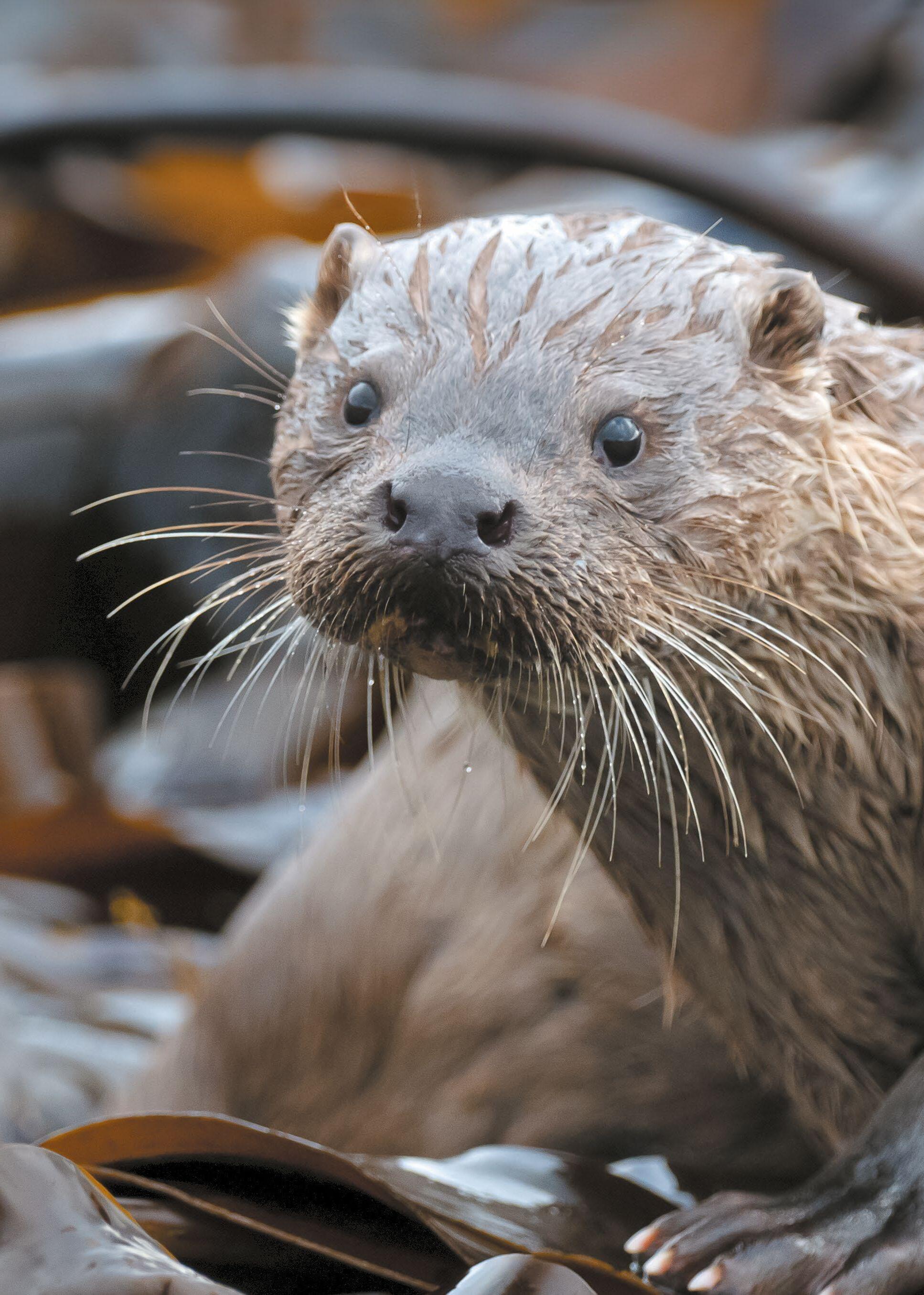
OTTER ON KELP BED © CHRIS GOMERSALL/2020VISION 18 Wildlife Durham | Spring 2024 NATIONAL

in the UK
Katherine Hawkins, nature policy manager at The Wildlife Trusts, gives an update on the State of Nature report and what it means.
The State of Nature report is perhaps the most comprehensive account of the status of wildlife in the UK. It is produced by a partnership led by the RSPB, consisting of scientists, data analysts, nature conservation experts and communicators from across more than 60 organisations –including The Wildlife Trusts. The aim is to use the best available data from the last 50 years to better understand and share information on the status and trends of habitats and species across the UK (and the Crown Dependencies and Overseas Territories). As well as presenting data and stats, the report also tries to explain the reasons behind the numbers. The findings are widely used to demonstrate the need for greater action for wildlife and to help focus efforts.
The first State of Nature report was published in 2013 and then again in 2016 and 2019. Unfortunately, the latest report – launched in September 2023 – shows that wildlife across the UK is continuing to decline.
The UK continues to be one one of the most nature-depleted countries in the world.
But it isn’t all bad news. We know the reasons for the declines. We know that conservation actions work. We know what needs to be done.

Wildlife Durham | Spring 2024 19
On average, 31% of reptiles, including common lizards, are at risk of extinction in the UK.
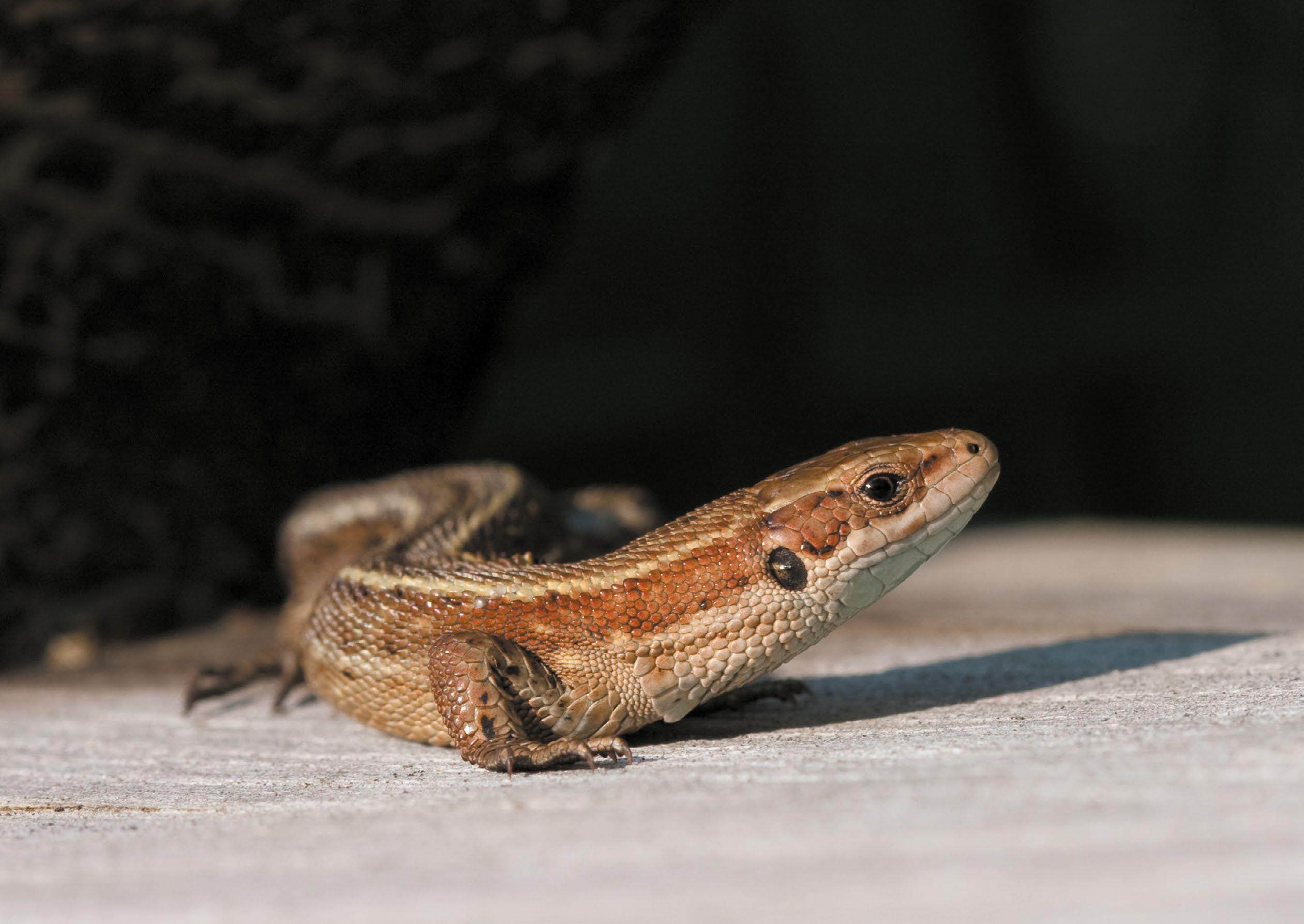
Fewer and farther between
Nearly one in six species is at risk of extinction in the UK.
That is one of the headline statistics from the report. However, when you drill down into the detail behind this alarming statement, the numbers are even more stark for some species. For example, 31% percent of amphibians and reptiles (i.e. one in three) and 26% of terrestrial mammals (equating to one in four) are at risk of extinction across the UK.
Abundance is a measure of the number of a single species. Across the UK, the overall abundance of all the species studied has declined on average by 19% since 1970. However, a single number for all species masks some worrying long-term trends. The average abundance of moths has declined by 31% since 1970 and the rate of decline has not slowed. At sea, grey seal numbers have increased as they recover from historic hunting pressures but the numbers of 13 species of seabird have fallen by an average of 24% since 1986.
The numbers of common breeding birds has declined by 14% whilst farmland birds have suffered particularly strong declines in abundance of on average 58%. Whereas rare or colonising bird species
have shown a strong increase over the long-term to 2020. This increase is due to some species recovering from very low population numbers – so it looks like a big increase – and the arrival of colonising species as a result of climate change.
Where species are found across the UK (known as distribution) is also changing. Since 1970, 54% of flowering plants have decreased in distribution across Great Britain. Invertebrates, such as insects and spiders, have been found, on average, in 13% fewer places now than in 1970. For those species that are important for pollination and crop pest control, the declines in abundance are even greater.
The report also considers habitat condition. Of the habitats important for wildlife, just one in seven of those assessed were in good condition and, worryingly, just 7% of woodlands and 25% of peatlands were assessed to be in a good state. None of the seafloor around the UK was found to be in good condition, mainly due to damage caused by fishing gear.
Drivers of decline
State of Nature reports on species changes since about 1970 when monitoring and data collection became more widespread and systematic. Before that, the UK had already experienced significant nature loss because of wildlife persecution and the way land use has changed.

Katherine Hawkins relishes being outside – hiking, camping, exploring. It was seeing and understanding the world around her that led to her working to secure nature’s recovery for us all.
COMMON LIZARD © VAUGHN MATTHEWS
20 Wildlife Durham | Spring 2024 NATIONAL
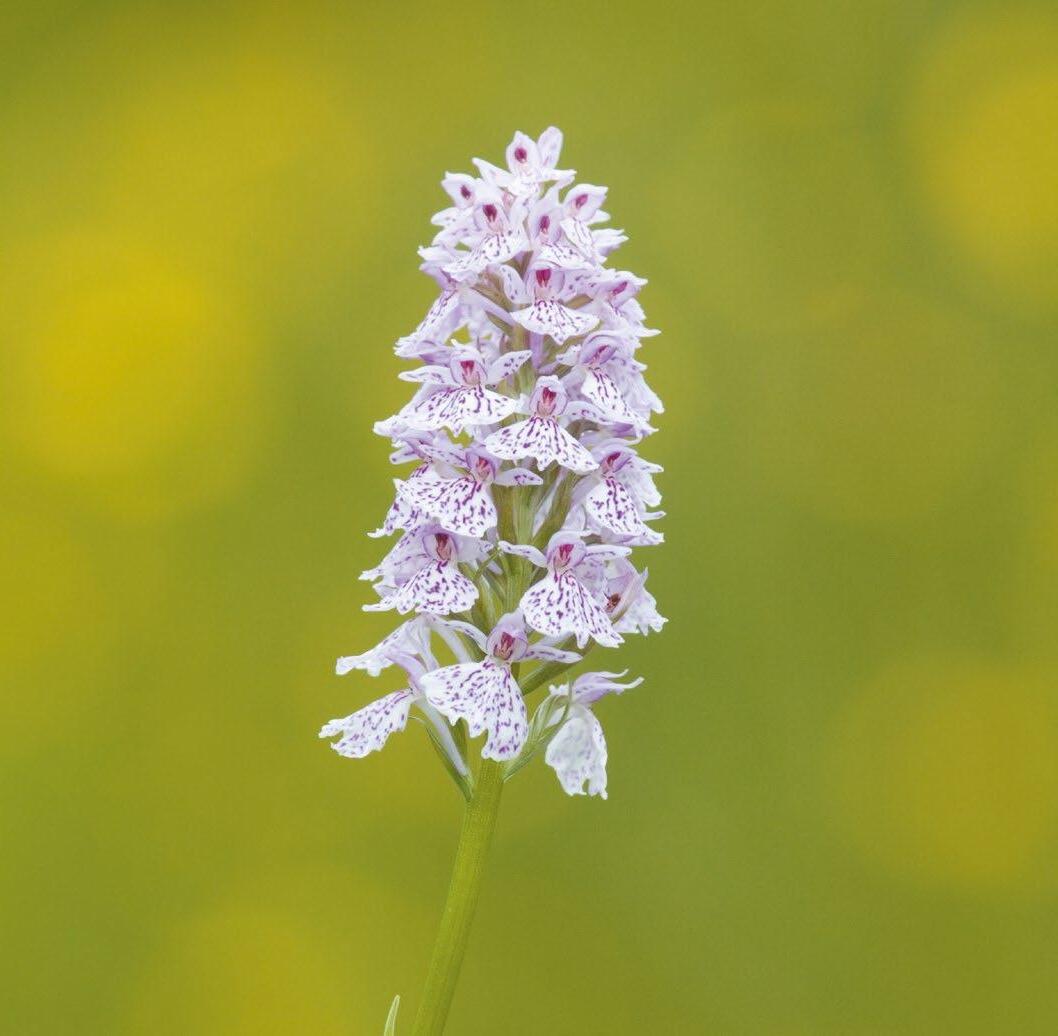
Flowering plants, like common orchids, are 54% scarcer than 50 years ago.
Historically, the main drivers of decline have been habitat loss, development and the intensive way we manage our land and harvest our seas. These effects continue but are now being exacerbated by the impact of climate change and extreme weather events.
26% of terrestrial mammals are at risk of extinction across the UK.
Conservation can work
Species recovery and habitat restoration projects make a difference. Improving habitat is good for nature and for people but it also helps to mitigate and adapt to the impacts of climate change. For many years, The Wildlife Trusts and a multitude of other organisations have been working tirelessly to restore the natural environment. We know what we are doing makes a difference but when pitted against increasing and external pressures, wildlife has continued to decline.
The State of Nature report sets out how effective targeted conservation effort has helped. For example, habitat management work has helped to stabilise populations of the Duke of Burgundy butterfly in the North York Moors and, nationally, the threat level for the butterfly has been changed from endangered to vulnerable. Skylark numbers are still falling but more positive trends have been seen where certain agri-environment grants aimed at nature-friendly farming have been adopted.
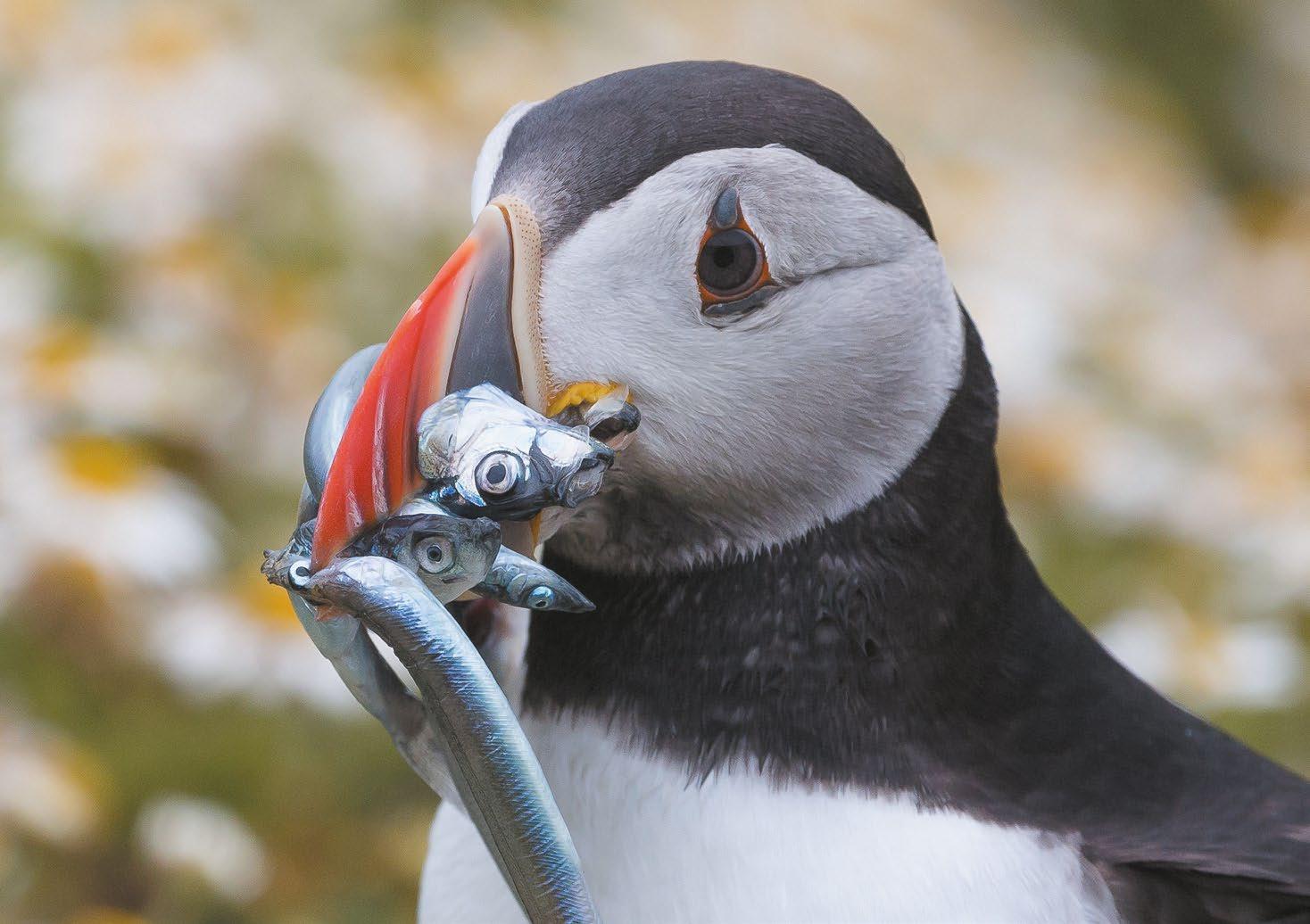
Seabirds, like puffins, are suffering from the effects of the climate crisis
In Scotland, targeted agri-environment action has supported corncrake numbers with increases from fewer than 500 males in 1993 to nearly 1,300 in 2014.
Protected areas – such as nature reserves – make a difference too. For example, State of Nature reports on research that has shown that protected areas had almost double the number of rare invertebrates compared to unprotected areas. Protected areas also help species that need to move because of climate change. In the future, the species found on protected areas may change but their importance for nature will remain.
Time for action
The Wildlife Trusts will continue to lead the way in large-scale, ambitious nature recovery projects, such as restoring temperate rainforests across the west of the British Isles and many river restoration projects across the UK, where beavers have been released.
There are also things we need governments to do such as properly fund nature-friendly farming schemes and more tightly regulate the water industry to halt the pollution of our rivers. The UK Government has also committed to protect and effectively manage at least 30% of land and sea by 2030 through the Global Biodiversity Framework (agreed in December 2022). Responsibility for the environment is devolved meaning each country of the UK will develop their own way of reaching 30% by 2030. An essential component though will need to be about making a significant difference to nature’s recovery with greater action and implementation as a matter of urgency.
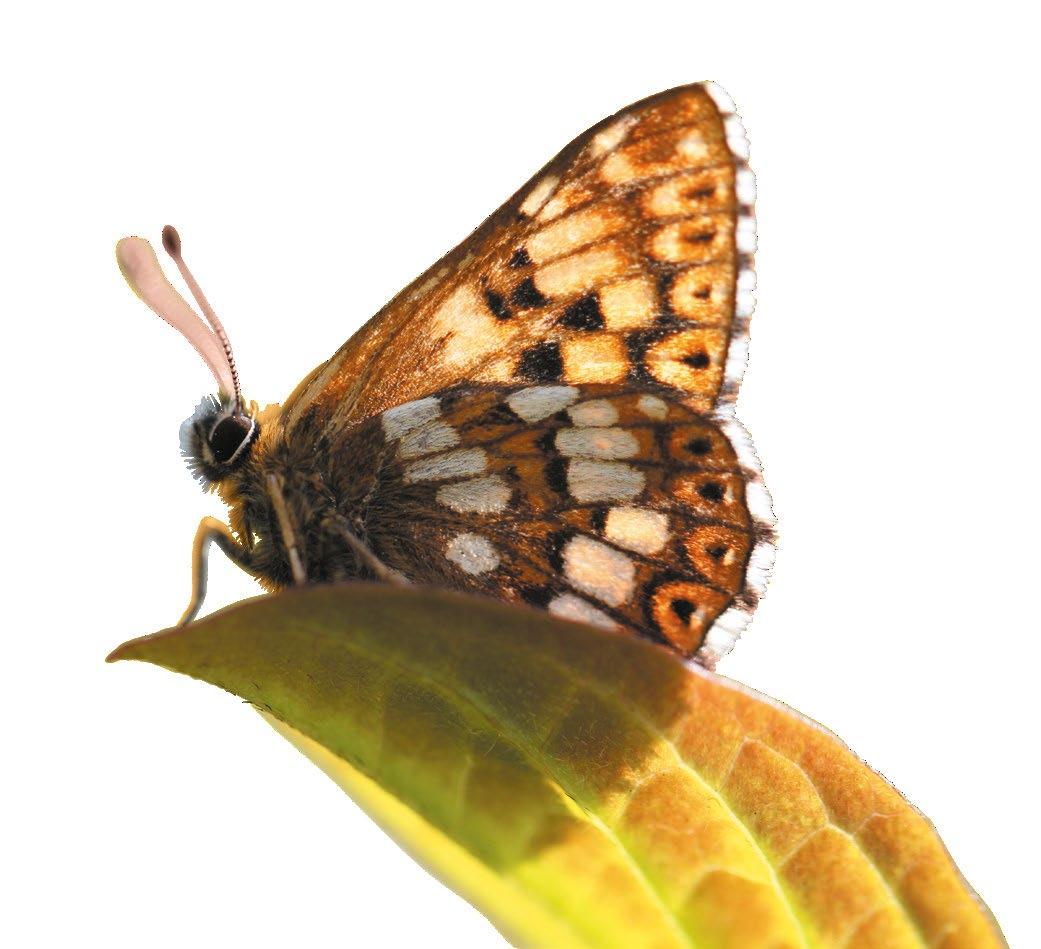
We are in a nature and climate crisis, but like CPR we know that landscape-scale conservation can jump start damaged natural ecosystems and save the precious lives of our beautiful native species. Find out more here
wtru.st/bringing-wildlife-back
COMMON SPOTTED ORCHID © TOM MARSHALL; PUFFIN © CHARLES THODY; DUKE OF BURGUNDY BUTTERFLY © JOHN HIGHAM
Wildlife Durham | Spring 2024 21

Ali Morse, water policy manager at The Wildlife Trusts, warns of a return to the dirty history of UK waterways
22 Wildlife Durham | Spring 2024 NATIONAL
The River Wye is suffering from algal blooms due to high levels of agricultural pollution



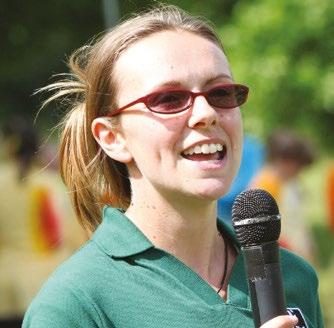
Twater policy manager at The Wildlife Trusts. She works collaboratively across the movement, with all Wildlife Trusts and with other organisations, to call for better protections for the water environment.
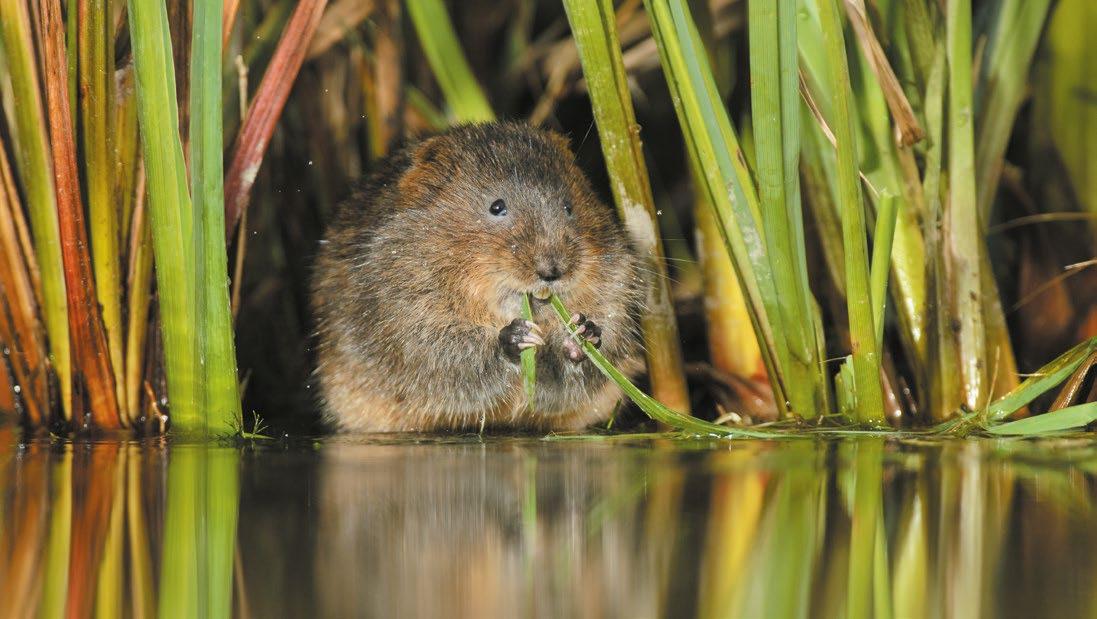
he history of UK rivers has seen raw sewage, waste chemicals and heavy metals poured into watercourses day in, day out. Great rivers like the Mersey were practically devoid of life, and as recently as the 1950’s the River Thames was considered ‘biologically dead’. Today our rivers don’t (usually) resemble putrid open sewers lined with dead fish. Yet many problems remain – poor water quality poses a threat to nature, human health and our economy.
Sewage spills
Headlines have exposed sewage spills, but the harm caused to wildlife is little understood. The UK Government’s Environment Act 2021 now requires water companies to monitor impacts and to prevent the most harmful spills. But even when wastewater is treated, the effluent from sewage treatment works may contain industrial chemicals, pharmaceuticals, household cleaning products, illicit drugs and microplastics. It’s also high in polluting nutrients like phosphorus, which fuel algal blooms, depleting oxygen and harming aquatic plants, insects, fish and other species.
Thanks to campaigning by supporters of The Wildlife Trusts and others, the UK Government was recently blocked from weakening water protections in places where nutrients are already harming sensitive rivers and coasts. These rules are known as nutrient neutrality and require developers to offset additional pollution from sewage from new housing. They help to prevent development from harming our most important wildlife sites.
Farming failures
Farming is the sector responsible for the greatest number of waters failing ecological standards. Excess fertiliser, manure, slurry and eroding soil can all deliver harmful doses of nitrogen or phosphorus to our rivers. Pesticides and veterinary medicines add into the mix. This toxic cocktail of chemicals also flows downstream, contaminating our seas.
Grants can help farmers to provide sufficient storage capacity for slurry and to manage rainwater from yards and roofs that contributes to runoff. Essential environmental schemes encourage farmers to plant cover crops and riverside ‘buffers’ to prevent soil erosion.
Despite these efforts, collectively these pressures mean our waters are under huge strain. Across the UK, only 36% meet ecological standards and are in good enough condition for wildlife. In England, where pressures are greatest, the figure is just 16%. Phosphorus pollution is the most common cause of failure, so water companies are required to upgrade numerous treatment works by 2030 to strip out phosphate, and more action will be needed from farming too.
Working with nature
From Dorset to Durham, Wildlife Trusts are finding novel ways to prevent nutrient pollution reaching our waters and creating habitat where nature can thrive. In Wiltshire, a chalk stream with habitat for spawning brown trout and endangered water vole is being protected by a restored wetland where road runoff and nutrient-loaded sediment is now captured from fields before it reaches the River Avon.
In Scotland, Warwickshire, Shropshire and Herefordshire, Wildlife Trusts are creating wetland features in farmland, river valleys and towns that capture water in the landscape, reducing flood risk downstream and stopping sewers from being overwhelmed. In other areas, beavers are doing this work for us. Termed ‘nature-based solutions’, these approaches see nature playing a central role in helping to tackle pollution, whilst also creating spaces where eels, kingfishers, otters and other aquatic life can thrive.
The old adage ‘the solution to pollution is dilution’ only works up to a point. Instead, the priority must be prevention of pollution at source – all UK governments, farmers, water companies and even the public all have a role to play. But then, when we’ve exhausted all efforts but still have pollution to tackle in our river systems, we know that nature can help.
Ask your local MP what they intend to do about river pollution and whether policies to protect clean rivers are part of their election manifesto. To find out more about our general election priorities visit wildlifetrusts.org/end-river-pollution
ALGAL BLOOM ON THE RIVER WYE © WILL WATSON, NATUREPL.COM; SEWAGE POLLUTION © SHUTTERSTOCK; WATER VOLE © TERRY WHITTAKER/2020VISION
Ali Morse is
Sewage spills are harming wildlife and wild places
Wildlife Durham | Spring 2024 23
Water voles are one of the species at risk of habitat loss
Maddie

Moate
Technology isn’t the enemy
Children have a huge appetite for nature. There’s an enormous world of wonderful wild things for them to discover, if they’re given the opportunity. The right experiences can build a connection to nature that will last a lifetime.
But as children get older, there are more distractions. Interests and hobbies are more likely to be influenced by friends than parents, or by the content they view online. If nature hasn’t fully captured their attention by now, that interest can slip away –though it often resurfaces later in life. So it’s important that we foster that connection to nature from as young an age as possible.
We worry about children’s access to technology being a blocker to spending time outside and connecting with nature. But I think technology can actually play a helpful role in breaking down barriers. As with everything, it’s all about balance. Often we’re out and about in nature, there’s wildlife around us, but we don’t really know what we’re seeing. Putting a name to the things we see or hear can help build an interest, and there are some incredible apps available to help with that, like Merlin Bird ID. You can even use them as a family and learn together.
The way we interact with the world has changed. Computers, apps, social media –they aren’t going away anytime soon. We can embrace them to spark children’s creativity. You can go online and find a tutorial for making pinecone creatures or other wildlifeinspired crafts, or follow role models using their digital platforms to inspire change. We’re seeing a fantastic rise in young nature activists, almost mini celebrities amongst young people. It’s a wonderful thing.

The more our young people care about the environment and nature, the better hope we have for a green and sustainable future. But it’s about far more than that. There’s so much evidence to show that young people who have that connection to nature, who experience nature in their daily lives, are happier and healthier. There are many reasons to encourage children to pursue an interest in nature, and happier children is a big one.
Knowledge of the natural world – and the state it is currently in – can sometimes feel like a burden as well as a blessing. Many of us worry about the future. The climate is changing and we’re seeing huge losses of wildlife. Children are not immune to these fears, and we shouldn’t try to hide the truth from them. But the way we present these facts matters. It’s easy to drown in the negative, but that won’t help to change things.
The most important thing we can do as adults is empower young people to feel like they can actually do something, and that their voice matters. We can help alleviate their climate anxiety by showing them that they can get involved with doing something good for the planet, wherever they live. The best place to start is by setting an example for them to follow, in the way we view nature and the actions we take to help it. If children see the adults around them caring, listening to the concerns, and taking meaningful action to help, it can be a huge inspiration.
Technology can help you connect with wildlife from the comfort of your own home. Check out our webcams
wildlifetrusts.org/webcams
GET INVOLVED
For ways to help the young people around you to nurture a connection to nature, visit The Wildlife Trusts’ Wildlife Watch website. You’ll find downloadable wildlife spotter guides, self-guided activities and actions to help wildlife and more.
Get inspired at wildlifewatch.org.uk
Maddie Moate is one of the few familyfocused ‘Edu-tubers’ in the UK and has been creating fun educational science videos for the past eight years, amassing more than 210,000 subscribers and over 56 million views on her own YouTube channel.
ILLUSTRATION © DAWN COOPER
24 Wildlife Durham | Spring 2024 NATIONAL
@maddiemoate
Let’s go 30 Days Wild
Scan with your phone camera to sign up!
Sign up to take part in the UK’s biggest month-long nature challenge
wildlifetrusts.org/30DaysWild







 By Rebecca Clark
By Rebecca Clark






 By Blair Watson Stronger Shores Engagement Officer and Martina Bristow Seagrass and Seaweed Research Officer
By Blair Watson Stronger Shores Engagement Officer and Martina Bristow Seagrass and Seaweed Research Officer






 by John Hayton & Amanda Bell
by John Hayton & Amanda Bell









































